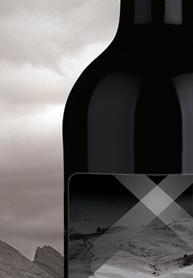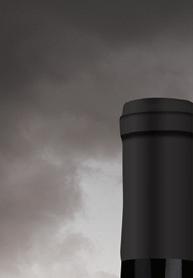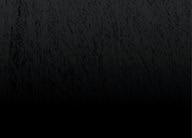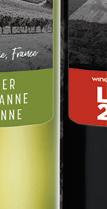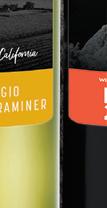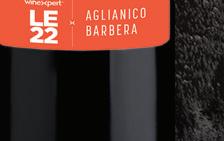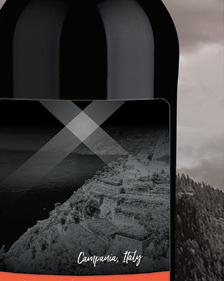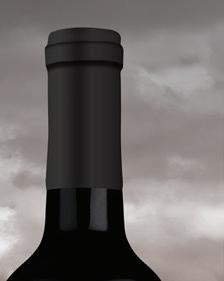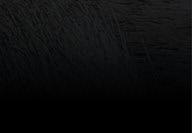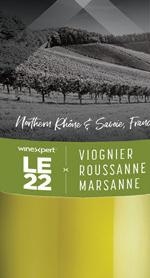




















IMPORTED BY




Phil Plummer was one of the experienced judges at the 2022 WineMaker International Amateur Wine Competition. After three days of judging he found himself repeating similar comments on numerous entry sheets. Now he’s here to explain in greater depth the most common flaws he tasted and the techniques that can be employed to avoid them in your next vintage.
 by Phil Plummer
by Phil Plummer

No two fermentations are the same, which means that there is always more to be learned with each one! Give your yeast the best chance for success by creating an ideal environment for a clean fermentation.
 by Jenne Baldwin-Eaton
by Jenne Baldwin-Eaton
Chemical and microbial stability measures must be taken after fermentation but prior to bottle aging to protect the wine from contamination and subsequent off-aroma generation caused by microbial metabolism. Learn the most common methods for achieving microbial stability, both during aging in the cellar and at packaging.
by Dwayne BershawWhether it’s a decadent red, crisp white, or robust rosé, Master Vintner® Sommelier Select® brings you grapes from the world’s best wine regions, that you’ll be proud to share with family & friends.

8 MAIL
A reader searches for insight on making spiced wines such as one he recently tried at a winery. The secret may be in the name: Glühwein (more commonly known as mulled wine in North America).
10 CELLAR DWELLERS
Learn about the lees that we find in wine and how we can use them to our advantage. A creative winemaker tells the backstory for a homemade wine label. We also share the latest news, new products, and upcoming events.
14 TIPS FROM THE PROS
Fall is here and there is an abundance of apples available and ready to be fermented. Three experts share advice for three different types of hard ciders (fruited, spiced, and hopped) so that you can try something different this year.
16 WINE WIZARD
With wildfires on the rise in many wine regions around the world, smoke taint has become a common phrase. Learn about it and ways winemakers may be able to try to make the best from affected grapes. Also learn about Campden tablets, getting news on grape growing conditions, and some other pearls of wiz-dom.
20 VARIETAL FOCUS
With origins in Spain, Garnacha grapes may now be more commonly associated with the Rhône and Languedoc-Roussillon region of France where it’s known as Grenache. Learn about Garnacha’s background and making the best version of wine with it.

46
Tannins are a big piece of the large puzzle when balancing many styles of wine. It’s important to understand ways to increase or decrease their presence when that balance leans too heavily in one direction or the other.
49
Once you have your site selected, soil figured out, as well as irrigation; it’s time to start planning things like row and vine spacing, what type of wine grapes you are going to grow, and then finally what trellis system will best support those vines.
56
Considered one of the great wine regions back in the days when Phoenicians ruled the Mediterranean Sea, Israel is seeing a big comeback in recent decades. Get the scoop on the burgeoning commercial and hobby scene in this holy land.

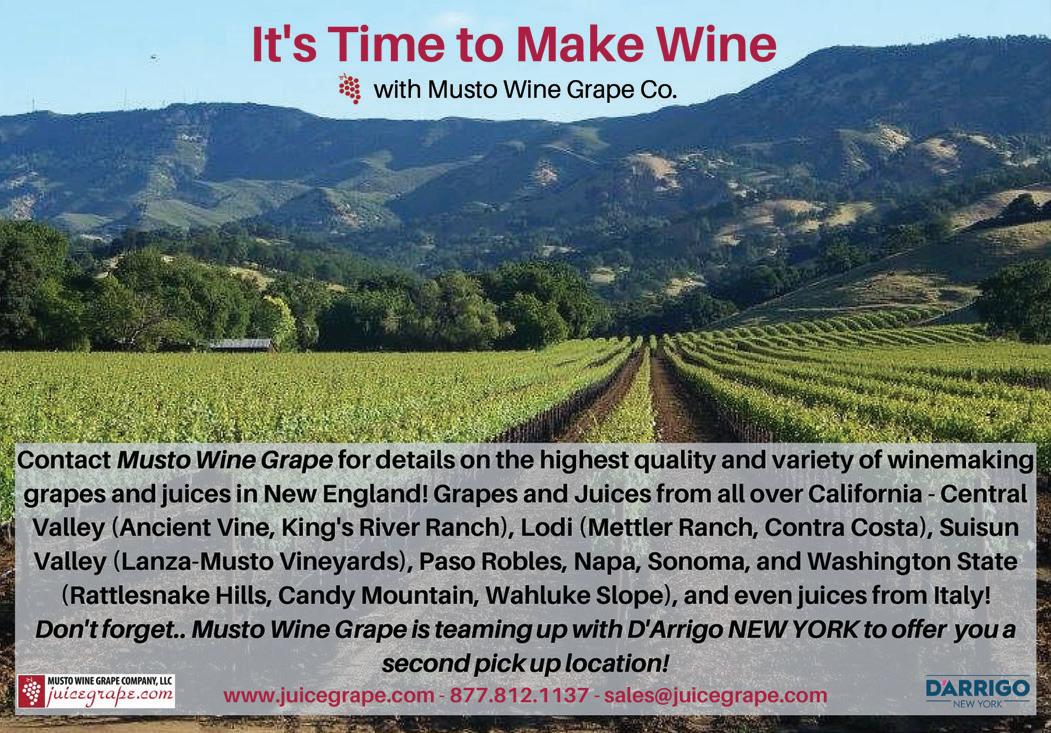
EDITOR
Dawson Raspuzzi
ASSISTANT EDITOR
Dave Green
DESIGN
Open Look
TECHNICAL EDITOR
Bob Peak
CONTRIBUTING WRITERS
Dwayne Bershaw, Chik Brenneman, Alison Crowe, Wes Hagen,
Maureen Macdonald, Bob Peak, Phil Plummer, Dominick Profaci
CONTRIBUTING ARTISTS
Jim Woodward, Chris Champine
CONTRIBUTING PHOTOGRAPHERS
Charles A. Parker, Les Jörgensen
EDITORIAL REVIEW BOARD
Steve Bader Bader Beer and Wine Supply
Chik Brenneman Baker Family Wines
John Buechsenstein Wine Education & Consultation
Mark Chandler Chandler & Company
Wine Consultancy
Kevin Donato Cultured Solutions
Pat Henderson About Wine Consulting
Ed Kraus
EC Kraus
Maureen Macdonald Hawk Ridge Winery
Christina Musto-Quick Musto Wine
Grape Co.
Phil Plummer Montezuma Winery
Gene Spaziani American Wine Society
Jef Stebben Stebben Wine Co.
Gail Tufford Global Vintners Inc.
Anne Whyte Vermont Homebrew Supply
EDITORIAL & ADVERTISING OFFICE
WineMaker
5515 Main Street
Manchester Center, VT 05255
Tel: (802) 362-3981
Fax: (802) 362-2377
Email: wm@winemakermag.com
ADVERTISING CONTACT:
Kiev Rattee (kiev@winemakermag.com)

EDITORIAL CONTACT:
Dawson Raspuzzi (dawson@winemakermag.com)
SUBSCRIPTIONS ONLY
WineMaker
P.O. Box 469118
Escondido, CA 92046
Tel: (800) 900-7594
M-F 8:30-5:00 PST
E-mail: winemaker@pcspublink.com

Fax: (760) 738-4805
Special Subscription Offer
6 issues for $29.99
Cover Photo: Shutterstock.com

PUBLISHER
Brad Ring
QASSOCIATE PUBLISHER & ADVERTISING DIRECTOR
Kiev Rattee
ADVERTISING SALES COORDINATOR
Dave Green
EVENTS MANAGER
Jannell Kristiansen
BOOKKEEPER
Faith Alberti
SUBSCRIPTION CUSTOMER
SERVICE MANAGER
Anita Draper
Sulfites get a bad rap in the world outside of true wine aficionados. Take a journey through the world of sulfites and understand some of the various philosophies regarding its use throughout the winemaking process. https://winemakermag.com/article/ so2-fundamentals
MEMBERS ONLY
My choice for red wines is EC-1118. It is relatively bulletproof. Good alcohol tolerance, temperature range, nutrient requirements are basic. If you are looking for yeast characteristics, this is not the one to use, but most of those yeast characteristics are gone by the time a red wine is ready to drink, anyway.
Oh man, do I have to pick just one?! If that’s the case here’s what I’d say: For the part of the world where I make wine (New York’s Finger Lakes), I’m not sure there’s a more versatile red wine yeast strain than Anchor’s Exotics Mosaic. In our cool climate, Mosaic’s ability to drive rich texture, minimize underripe aromas, and partially degrade malic acid are all highly desirable characteristics that help us to craft structured, ageworthy red wines from hybrids and vinifera alike.
A few years ago Anchor came out with the Alchemy series of yeast. They are a blend of compatible yeast strains that work together in a single fermentation to make some really complex results. My favorite for reds (this week) is Alchemy 4 — it can really support fruit character and makes a wonderful mouthfeel in the wine.
All contents of WineMaker are Copyright © 2022 by Battenkill Communications, unless otherwise noted. WineMaker is a registered trademark owned by Battenkill Communications, a Vermont corporation. Unsolicited manuscripts will not be returned, and no responsibility can be assumed for such material. All “Letters to the Editor” should be sent to the editor at the Vermont office address. All rights in letters sent to WineMaker will be treated as unconditionally assigned for publication and copyright purposes and subject to WineMaker’s unrestricted right to edit. Although all reasonable attempts are made to ensure accuracy, the publisher does not assume any liability for errors or omissions anywhere in the publication. All rights reserved. Reproduction in part or in whole without written permission is strictly prohibited. Printed in the United States of America. Volume 25, Number 5: October-November 2022.
While a winemaker does not need to know the chemistry of polyphenols and tannins to make good wine, some basic knowledge can help drive winemaking decisions that may improve the outcome of any given vintage. https://winemakermag.com/ technique/tannin-chemistry-in-wine

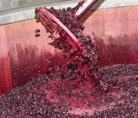
Winemakers in Chateauneufdu-Pape in the southern Rhône region are happy to have 13 grapes to work with, permitted by the appellation rules. Blending plays a large part in how they have made wines of great distinction for hundreds of years. https://winemakermag.com/ article/674-the-joys-of-blending
MEMBERS ONLY
Whether it is choosing a yeast strain, halting fermentation with a little residual sugar, putting a wine through malolactic fermentation, or a myriad of other options, there is a lot to consider when fermenting white wines. https://winemakermag.com/article/ white-wine-fermentation-decisions
MEMBERS ONLY
* For full access to members’ only content and hundreds of pages of winemaking articles, techniques and troubleshooting, sign up for a 14-day free trial membership at winemakermag.com
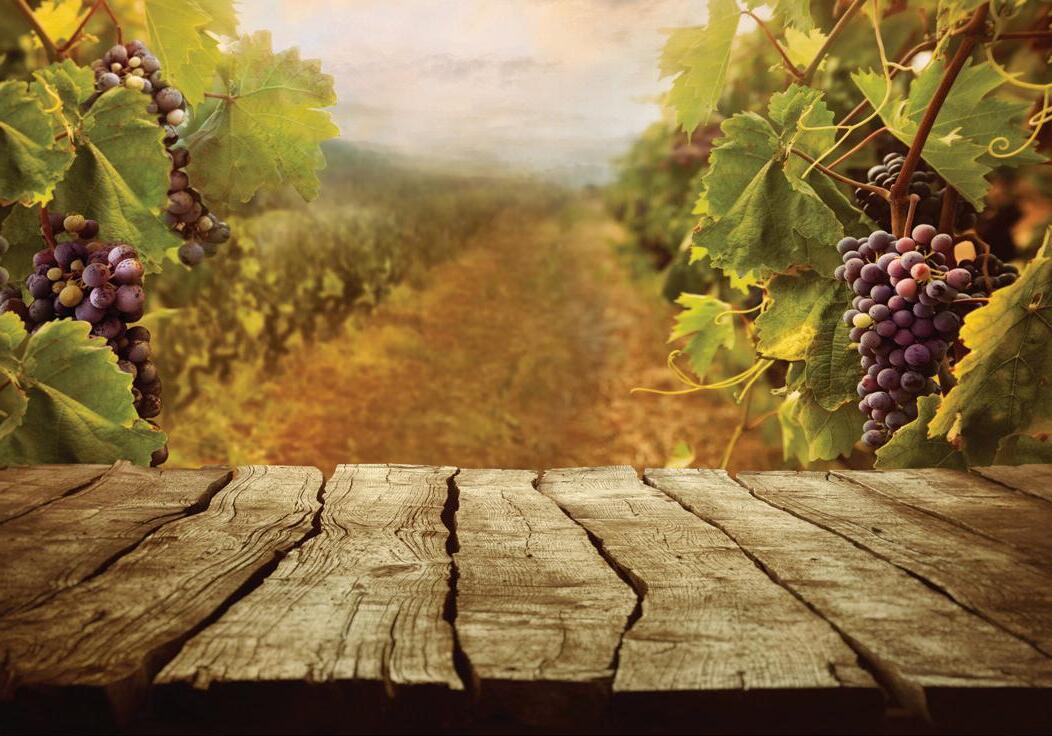
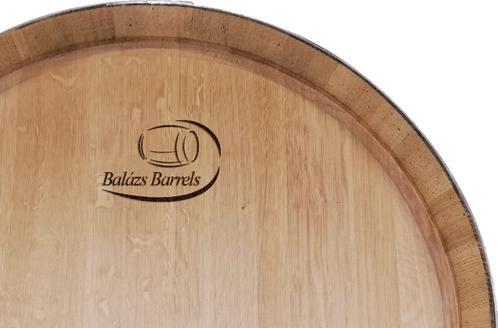

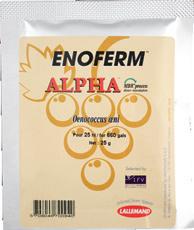
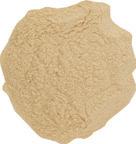
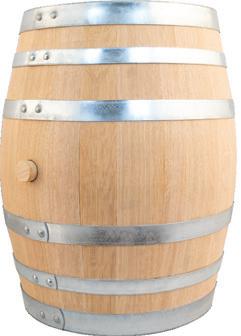
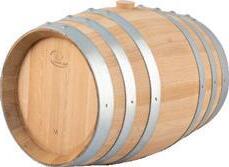
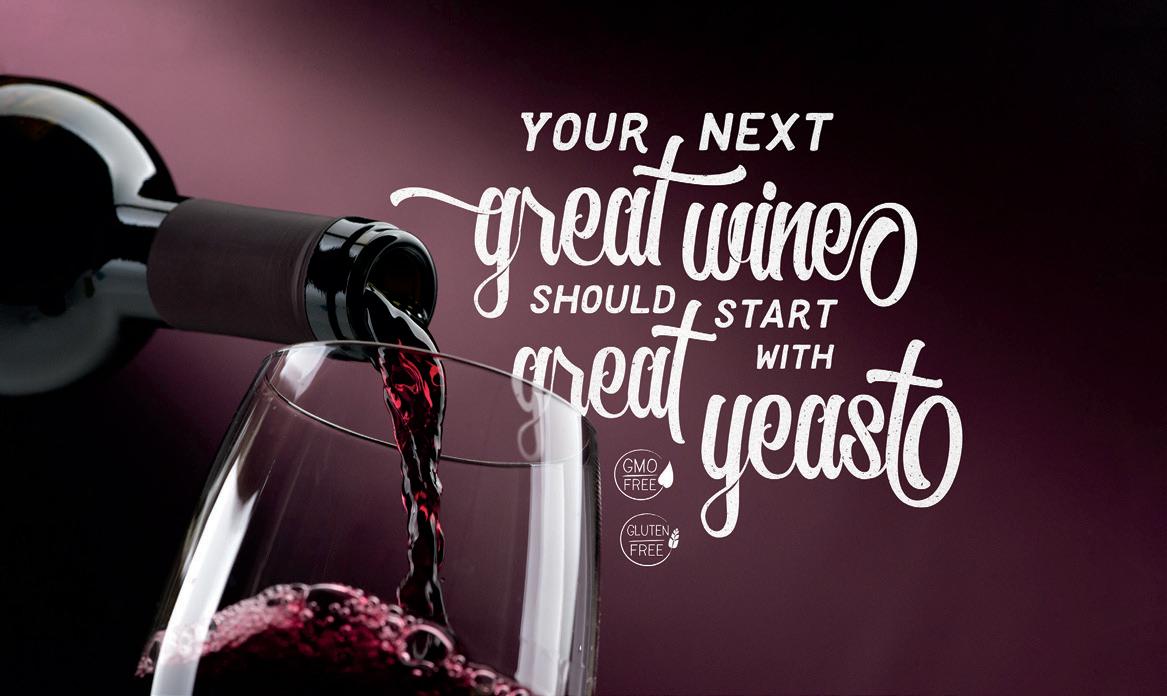

I recently had some spiced wine called Glühwein at Duck Creek Winery in Denmark, Wisconsin that they sold bottled. The label didn’t list the spices included only that it was 10% ABV. They don’t have it listed on their website currently. I suspect it might be a seasonal wine for them. I’d like to make my own but I’m not finding recipes except ones you’d make on the stove with a bottle of wine. Would you have suggestions where I might find a recipe?
Scott Sanford • via email
As you may know, “glühwein” is the German name for mulled wine and is made in the same way as described in the articles we’ve run on mulled wine. These wines are most often created by using a red wine that is heated on the stove along with spices and fruits. They can then be served hot or chilled and are popular in the winter months around the holidays not just in North America, but across the world. That said, we wanted to make sure that is in fact what Duck Creek was doing. Jim Ploetz of Duck Creek responded and, while he isn’t sharing many secrets, he did provide some insight into the spices he uses.
“We do make a glühwein, we release it usually around the end of September. It’s a family recipe and really would like to keep it a winemaker’s secret. It is made from a red wine and has some clove and cinnamon in it. The wine can be served warm or at room temperature. We have had a lot of customers come in and say that it is very close to what they had when they were in Germany . . . The Germans serve this around holidays.”
With all of this said, our recommendation if you wanted to make an entire batch of spiced wine to bottle would be to approach it in a different way, more similar to how homebrewers spice beer or aperitifs (such as sweet vermouth) are made. In these processes, instead of adding spices for a quick extract in a heated liquid, you would make a tincture of each spice by adding the spice to vodka. After a week or two, remove the spices and add the tincture to the wine (after doing trials to dial in the right amount of each based on taste). This method will likely result in a clearer wine than bottling a heated and then cooled mulled wine.
If you are interested in making a mulled wine, Bob Peak wrote a great story on the subject with spicing recommendations in the October-November 2021 issue, which digital members can also read online at: https://winemakermag.com/article/mulled-wine. Bob also wrote a piece on making aperitifs, which will be helpful if you choose to go the tincture route, available at: https://winemakermag.com/article/aperitifs
Phil Plummer has been a student of wine since 2004 when he began his formal education in the subject at Rochester Institute of Technology. For the past 11 years, Phil has worked for the Martin Family Wineries (Montezuma, Idol Ridge, and Fossenvue) in New York’s Finger Lakes Region, serving as Head Winemaker since 2013. In his time as Head Winemaker, he has developed a diverse portfolio of unique wines made from grapes, fruit, and honey. Phil’s passion for wine and winemaking is boundless, as evidenced by his constant experimentation with new techniques, materials, and mindsets.
Starting on page 28, Phil revisits his time judging at the 2022 WineMaker International Amateur Wine Competition and the most common flaws he saw and how to address those issues in the cellar.
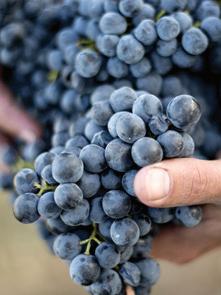
Jenne Baldwin-Eaton has been a winemaker in the Colorado wine industry for the past 28 years. Hired as a lab chemist in 1994, she progressed to Head Winemaker in 1999 for Plum Creek Cellars, one of the largest and most award-winning wineries in Colorado. In 2017, she started the first Colorado Associates of Applied Science in Viticulture and Enology program at Western Colorado Community College, a division of Colorado Mesa University. Jenne says the motivation behind starting the program and teaching was to help integrate what had been learned by the Colorado grape growing and winemaking pioneers with the current experimentation of the next generation. Although recently retired from academia, Jenne has a long-standing passion for the Colorado wine industry and continues to support, educate, research, and consult with her community.

Jenne makes her WineMaker writing debut beginning on page 34 as she outlines the keys to a successful fermentation, which all begins with happy yeast.
Dwayne Bershaw began making wine in his garage in 2006 while working as an engineer in Silicon Valley. The passion grew and in 2010 he received a master’s degree in viticulture and enology from UC-Davis. He has four years of experience in a variety of temporary positions in Sonoma and Napa County wineries, and served four years as the Associate Director of the Southern Oregon Wine Institute at Umpqua Community College where he taught all of the enology coursework. There he was also responsible to schedule and manage production of 300–700 cases of wine per year with student participation at the school’s commercial winery. Since 2015 he has held a lecturer position in the food science department at Cornell University.
Beginning on page 40, Dwayne explains how to protect our wine from the moment fermentation is complete through to bottling by making it microbially stable.


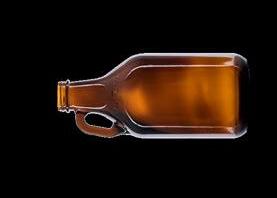
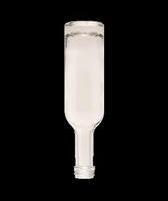

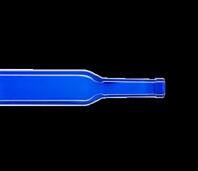
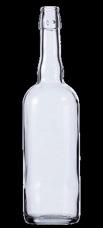


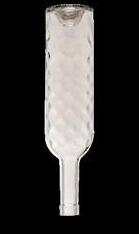










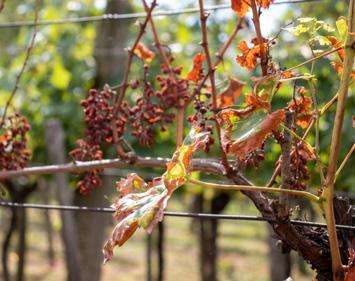
In the August-September 2022 issue of WineMaker, we reported on a big potential breakthrough in the fight against glassywinged sharpshooters, a scourge of California grape growers. In another breakthrough, scientists say they may have found the pathway and potential cure for grapevine trunk diseases (GTDs). GTDs are a fungal issue that has caused an estimated $1.5 billion in annual damage to vineyards according to a study done in 2012. Eutypa dieback and esca are two commonly known GTDs. The researchers found that a mix of reduced iron (Fe2+) and hydrogen peroxide combine in a complex interaction among several fungal species and are released into the wood. It is here that combination can prove deadly to grapevines because it releases free radicals. Free radicals are the reason we are told to take our antioxidants . . . they’re not good for any living creature.
The good news is that this combination of iron and hydrogen peroxide should be easily stopped by antioxidants and a common compound we know as chelating agents. So what is a chelating agent? It’s a chemical compound that reacts with metal ions to form a watersoluble, stable complex. They can be found in our food, in cleaning products, in medicines (such as cancer treatments), and water treatment systems, among other uses. So potentially by treating the wounds (growing fungi) on the grapevine trunk with a chelating agent and antioxidants, the reduced iron can be removed from the equation and hydrogen peroxide can be turned to water. https://www.frontiersin.org/articles/10.3389/fpls.2022.921961/full

The new GOvent from GOfermentor allows users to get a real-time estimate of the alcohol levels in their wine. By replacing your airlock with their alcohol estimator, which gauges the carbon dioxide gas released, you can graph and monitor the progress of your fermentation from anywhere using the optional Android/iOS app. The accuracy is +/– 0.25% ABV in closed fermenters up to 30 gallons (120 L) of wine, beer, mead, and other fermentations. There is an LCD display and WiFi internet connection is required for remote access. https://www.GOfermentor.com
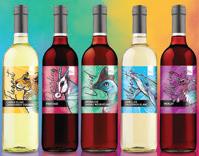
The new RQ series from RJS Craft Winemaking, the Charisma line, sources grapes from the Southern Hemisphere countries of Australia and South Africa. There are five options to choose from: A Chenin Blanc-Chardonnay-Viognier blend; a Grenache-Shiraz-Mourvèdre blend; a Semillon-Sauvignon Blanc blend; a Pinotage varietal; and a Merlot varietal.
https://rjscraftwinemaking.com/restricted-quantities-2023/
OCTOBER 7, 2022
Registration deadline for the American Wine Society (AWS) 2022 Amateur Wine Competition. Open to all amateur winemakers and includes still, fortified, and sparkling wines made from vinifera, native, and hybrid grapes. Also judged by certified judges will be wines and ciders made from fruit, vegetables, flowers, honey, and grasses. Pre-registration is required and the cost is $25 (AWS member) / $35 (non-member) per entry. For more information visit: https://www.awscompetitions.com/on-line-entry

OCTOBER 31, 2022
Judging for the 49th Annual U.S. Amateur Winemaking Competition will take place on November 12 & 13, 2022. Entries will be accepted from August 15 through October 31. Entries should be shipped to or dropped off at The Home Wine, Beer, and Cheesemaking Shop in Woodland Hills, California. Fees are $20 per entry. The U.S. Amateur is sponsored by the Cellarmasters of Los Angeles Home Winemaking Club. More information and registration forms can be found at www.CellarmastersLA.org
Here is a list of medal-winning kits for the Cabernet Sauvignon and Merlot categories chosen by a blind-tasting judging panel at the 2022 WineMaker International Amateur Wine Competition in West Dover, Vermont:
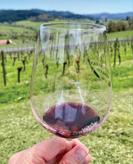


Cabernet Sauvignon
SILVER
Winexpert Reserve Cabernet
Sauvignon
BRONZE
Finer Wine Kits Forte Series
Cabernet Sauvignon
VineCo Estate Series Cabernet
Sauvignon
Winexpert Eclipse Three Moons
Cabernet Sauvignon
Winexpert Private Reserve Lodi Ranch II California Cabernet


Sauvignon
Merlot
SILVER
Winexpert Private Reserve Napa Valley Stag’s Leap Merlot
BRONZE
ABC Cork Fontana Washington
Merlot
Finer Wine Kits Lodi Merlot
Mosti Mondiale L’Originale Merlot
RJS Craft Winemaking En Primeur

Merlot
RJS Craft Winemaking Grand Cru

Merlot
VineCo Passport Merlot
Winexpert Classic Chilean Merlot
Winexpert Eclipse California
Merlot
when you register now. We look forward to seeing you in Oregon in 2023!
 MICHAEL CONNOR • COVENTRY, CONNECTICUT
MICHAEL CONNOR • COVENTRY, CONNECTICUT
Iam of Irish descent and wanted to create a label that paid homage to not only my Irish roots but also to the many past and present amateur home winemakers in my family. A green outline of Ireland serves as the backdrop for this label.
Conchobar (pronounced as konx-o-var) is, according to online sources, the old Irish source name for my surname and our Irish family crest is emblazoned with an oak tree, a symbol of strength. Both the oak tree and winery name are displayed in the top section of the label with two acorns under the winery name.
The bottom section of the label contains two beagles looking at each other. Conchobar means “lover of hounds” (or lover of canines depending on the source) and our family just happens to have two beagles (Bo and Stanley) who highly resemble those found on the label.
All images on the label are public domain or copyright-free images with countless hours spent trying to choose the right ones. I hope you enjoy both the aesthetics and meaning behind the label.

From the sun-kissed plains of the Alentejo wine region to the terraced hillside vineyards of the Douro River valley to the charm of Porto, what’s not to love about Portugal? Join WineMaker Magazine for a comprehensive Portugal wine vacation visiting remarkable wineries and port wine lodges with in-depth wine tastings and winery tours geared towards our group of home winemakers. We will visit the Vinho Verde DOC, Douro River valley, and Porto in the north, and the Alentejo wine country further south outside of Lisbon. Along the way we’ll visit a cork forest, delight in vineyard picnics, take a local cooking class, enjoy a Rabelo boat ride down the Douro River, explore several historic cities, and stay in luxurious hotels each night. Join us for an immersion in a rich wine experience in Portugal! For more details visit: winemakermag.com/trip
hile this issue’s topic is really more of an intermediate to advanced concept and technique in winemaking, there is no reason beginning winemakers should not be thinking about these techniques as they advance. Let’s start with the basic idea of what lees are, the process of sur lie aging, and how bâttonage fits into the picture.
In the broadest sense of the term, lees are what fall to the bottom of a fermenting or aging vat of wine. Winemakers generally will split lees into two classes, each with their own set of characteristics. Gross lees are generally the first to precipitate to the bottom of your fermenter, usually within the first 24 hours after the grapes are pressed. These include grape skins, MOG (material other than grapes), seeds, stems, dead yeast, and tartrates, among other things. It is preferred that gross lees are removed after they have settled since they can contribute off-flavors.
Fine lees take longer to settle and they mainly consist of dead yeast cells. These take days to settle, even weeks, and unlike gross lees, can greatly enhance the body of a wine. This is why some of the great wines of the world, e.g., Champagne, are aged on the fine lees. While it is traditional to age some wine on the lees, not all wine is meant to be aged on them. So let’s take a spin through why you may want to use them.
So what makes fine lees so special to winemakers? Well we can’t talk about them without understanding autolysis and mannoproteins. The term autolysis refers to the breakdown of the dead yeast cells that have precipitated out of the wine. While this decom-
position may seem like something winemakers would like to avoid, the dead yeast release a class of compounds from the cell wall known as mannoproteins. These compounds are a natural enhancer to the mouthfeel and body of a wine.
Mannoproteins will also interact with tannins, reducing the astringency and harshness that can be associated with excess tannins. The benefits of mannoproteins doesn’t stop there . . . they also can stabilize a red wine’s color, inhibit tartrate crystallization, and reduce both oxidation and protein haze. Winemakers can find products that will provide them via inactivated yeast like Enartis Pro Uno.
So while winemakers often want to remove the gross lees, as we just found out, aging wine on the fine lees can have many benefits. The only downside with aging on fine lees can be in the extreme example that they completely run out of oxygen in solution and start to produce hydrogen sulfide. This can easily be taken care of by racking wine, which will both remove the wine from the lees and reintroduce a little oxygen to solution.
First off, winemakers using kits or juices are at an advantage here since most will contain very limited amounts of gross lees. The fine lees will be the vast majority of the lees that settle to the bottom of their fermenters. Fresh grapes on the other hand will need an extra step to separate the two forms of lees. Since gross lees will settle within roughly 24 hours and fine lees take longer, we can use the physical discrepancy to our advantage. After pressing the grapes, winemakers can allow the gross lees to settle for 24 hours, then rack the wine off the gross lees. Then most of the fine lees will slowly settle to the bottom over the course of the next several days.
Sur lie aging simply means that the winemaker has aged their wine on the lees. An important element to sur lie aging is the bâttonage process. This is simply a French term for stirring the wine and in doing so, mixing the lees back into solution. Why would winemakers want to do this? There are several reasons. First is that it can speed up the autolysis process and the release of the mannoproteins into your wine. Second, if your wine is going through the malolactic fermentation process, the stirred lees can better provide nutrients to the bacteria as well as scavenge oxygen from solution, which the bacteria likes. Finally, the bâttonage process prevents the yeast from compacting on the floor of your fermenter, which can cause problems such as creating hydrogen sulfide gas.
Just be sure to be very gentle while stirring since you want to minimize the introduction of oxygen. Carboys and demijohns can simply be rolled around on their rim so you don’t actually need to even open the fermenter. For larger tanks or when aging in barrels, there are special tools winemakers can utilize for the stirring process.
So how often do you want to perform the bâttonage process on your wine when aging on the lees? While there is no hard and fast rule, the general answer from professional winemakers is every 2–4 weeks. If all you’re doing is rolling the carboy around, then every two weeks seems reasonable. If you have to open your fermenter and stir, you may want to do it every four weeks to minimize oxidation issues.
For a deeper dive into the science and different stylistic approaches to lees and sur lie aging, I recommend: https://winemakermag.com/technique /lees-and-you-dead-yeast-can-beyour-friend
After you’ve made a couple batches of hard cider it is fun to branch out to some more unique styles. In this column, we ask for advice from three cidermakers to make fruited (Incline Cider), spiced (Meriwether Cider), and hopped (Jason Phelps) hard cider.
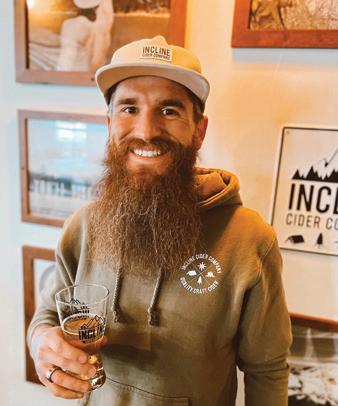
For our fruited ciders we primarily use fruit juice as purees can be a bit harder to work with, needing some more attention on the filtration. For the majority of these ciders we add the fruit additions post-fermentation. I think the advantages of adding post-fermentation are the consistency it lends us for the end product and the ability to replicate a recipe. Co-fermenting apples with other fruits is a lot of fun — it is an additional world that is worth exploring, but, it also brings several new variables into the mix.
The ratio of apple-to-fruit depends on the end result you are looking for. Do you want to really sweeten something up or just add a touch of fruit flavor? Do you want to obtain color from your fruit addition? For most single-strength juices I’d say 5:1 appleto-fruit is an easy place to start. Some juices will take a lot to shine through the cider and others just a touch. Just experiment and have fun with it.
We generally utilize a similar blend of apples to make most of our base ciders and do not tweak that apple mix to account for later fruit additions. This is part of keeping things consistent and of high quality for us. When sourcing apples I would suggest seeking out a place near you that offers fresh-pressed juice instead of getting too hung up on the variety. There is an enormous world of apples to explore but that would be my recommendation for a good jumping off place — something you can replicate and hopefully have some continued access to. I started making cider in
Arizona and at the time finding freshpressed juice was gold — there was not easy, local access to any specific apple varieties.
We have a house yeast for most all of our ciders (including these fruited ciders) that we find accentuates our apple mix. However, for some smaller projects I enjoy experimenting with different yeast strains from the beer and wine worlds.
As winemakers and cidermakers know, it is all about experimenting and finding out what works for your style. There is no right or wrong way to make a fruit cider. If I had the flexibility of a home winemaker making small batches I’d probably spend a little more time playing with co-fermentations and making some sour ciders with fruit additions. I’d recommend that home winemakers try co-fermenting as well as adding fruit post-fermentation. Experience the differences of working with the same fruit in different ways. If you can get to a point where you are making a consistent apple cider, playing with different juice or puree post-fermentation additions are a great way to build out some recipes.
Working on a home winemaking scale really provides an opportunity to source high-quality, single-strength juices without breaking the bank at most mainstream grocers. Aim for juices without additives or funky extras, as generally the shorter the ingredients list, the better. When you only need a gallon or so (4 L), even utilizing whole fruits and juicing them yourself with a hand press, blender, or juicer is a great option. If you can’t find watermelon juice, just make your own!
I’d recommend that home winemakers try co-fermenting as well as adding fruit postfermentation. Experience the differences of working with the same fruit in different ways.Jordan Zehner is a Co-Founder of Incline Cider Company in Tacoma, Washington. Since 2015, operating an independently owned, family-run cider company requires and allows Jordan to be a part of just about all business operations from product development, to marketing and design, to accounting. He focuses on creating unique yet approachable hard ciders.

e make a lot of ciders with different spices and herbs in them. To get the most flavor out of the spices, 99% of the time we add them post-fermentation, however the approach varies depending on the specific spice. We use tinctures when the zest of a citrus fruit is used or when a dried herb/ botanical is used in the flavoring. For fresh spices like hops, basil, etc. we dry hop where we let the spice sit in the cider in a mesh bag until the right flavor is obtained (let your palate be your guide).
These styles of cider can be dry or sweet. Personally, I’m more of a dry cider guy and love our hopped cider, which I think needs to be dry because it allows you the delight of hop flavor and aroma without the bitterness. Also that slight sweetness in the hops balances well with the dry cider. If I were to choose a sweeter cider it would be our grapefruit rosemary cider. The tartness and bitterness of the grapefruit zest tincture and juice is balanced by backsweetening with apple juice.
We don’t do anything different with
For dry-hopped cider I generally add 0.25–0.5 oz. of hops per gallon of finished cider (2–4 g/L). I’ll typically leave those in contact for three days, and if I want more hop character I’ll dry hop a second time after removing the first addition. Any longer and I begin to pick up a grassy, herbal character and a building astringency. Hop lightly for a short period of time.
I have found that many hops have far too much character and can easily overpower a cider. One of my all-time favorites is Nelson Sauvin, which includes descriptors of white wine grapes, gooseberry, and passion fruit. These are all great matches for apple and the lightly floral aromas from the cider. I have also tried some European hops that might not be thought of as aromatic powerhouses, but have very complementary features. Hallertauers, including my own backyard grown ones, have been the most reliable hops for me to get a subtle, pleasant hopping without any concerns that I’ll have gone
apple or yeast selection for these spiced ciders. We generally stick with a five-apple blend making sure the Granny Smith with its tartness dominates. This blend has worked very well for us but on occasion we use crab-apple and foraged apple blends for experimentation. We’ve also tried small batches of New Town Pippins and Granny Smith as single varietals and it has worked well for us. Our house yeast is made for Champagne and/or white wine and is what we use in 95% of our ciders and then backsweeten post-fermentation. However, we have 5-gallon (19-L) carboys everywhere experimenting with new yeasts and apple juice combinations.
For home winemakers, my advice is if you’re collecting apples around your neighborhood to crush and press, make sure you have a combination of apples that have tannins, tartness, and sweetness. Post-fermentation, make both orange and lemon zest tinctures (zest of a lemon and orange, add ~6 oz./177 mL of vodka to each, shake, and let sit for a day or five), filter the zests out, add enough sweet apple juice to balance and add each tincture slowly until it pleases your palate. It’ll make a great summer cider!
too far in 2–3 days.
One area I experimented with commercially was the use of hot-fermenting kveik beer yeasts like Hornindal and Voss to ferment ciders (these strains work best in the upper 90s °F/mid-30s °C). What I was looking for was how that aromatic profile is different in the outcome overall, but I also wondered if that could lead to hop pairings that did not work as well with ciders fermented with traditional wine or ale yeasts. We dry-hopped one of these ciders with Mosaic® hops, and the combination of the earthy, fruity cider with the big hop aromas was delicious. Outside of that, I typically recommend ICV D47, ICV D21, or 71B1122 for traditional cider ferments — all of which work well with hopped ciders too. These are reliable at 62–65 °F (17–18 °C). With a good nutrient program they lead to clean ferments at a good pace with lots of pleasant aromas retained and without the hydrogen sulfide (H2S) production that cider is notorious for in rushed ferments.
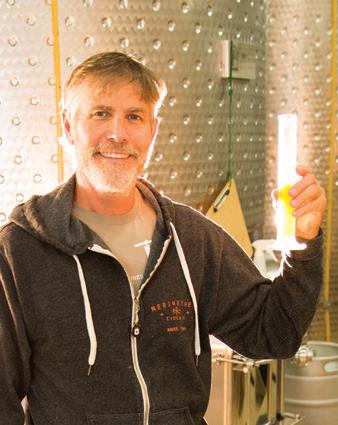
QDO YOU SEE ANY OPPORTUNITIES FOR NEW STYLES OF WINE MADE FROM SMOKE -TAINTED GRAPES? HAVE YOU TASTED ANY COMMERCIAL EXAMPLES PURPOSEFULLY USING SMOKE -TAINTED GRAPES?
BRIAN COX MARTINEZ, CALIFORNIAAI’ve heard rumor that a couple of smaller wineries that have experienced smoke taint in their grapes are indeed evolving that wine into new styles. Depending on the grape type and level of impact, it’s possible their base wines may have a wide array of “smoke effect” descriptors like: Bacon-y, deli meat, barbecue, toasty, etc., which all can be positives in the right place. As long as a wine isn’t completely objectionable (think old ashtray or cigarette butt), it’s perfectly sensible to me to try to work with what you’ve got. In some cases, winemakers are layering on a lot of oak, or doing one of these Bourbon-barrel style wines, which lean heavy on the toasty oak and seek to make a feature of the smokiness, rather than perceive it as a flaw. How well are these wines selling and how consumers are perceiving them I couldn’t tell you as I don’t have any insight there; but I do know some folks are getting creative when they are working with grapes and wines with a somewhat smoky character.
In general, smoke taint is a new phenomenon as wildfires have really only been a part of winemaking in the past 5–10 years. The research on the subject is still fairly nascent and there is still so much we don’t know. For what it’s worth, I would like to tell our readers some basic facts about smoke taint in grapes and wines as well as some of my personal observations:
• Smoke-affected grapes and wines are
still safe for human consumption.
• Many of the “smoky” compounds that can be signs of smoke exposure in grapes and wine are actually desirable in many wine styles. In fact, many are the exact same chemical components that winemakers purposefully put into wines in the form of toasted oak barrels, chips, beans, etc.
• Smoke-taint research is still in its infancy. Experts still disagree about which markers to use to track evidence of smoke taint, what level of smoke exposure is a risk, and even the definition of what smoke taint is.
• Just because there is smoke in the air doesn’t mean your grapes and wine will exhibit smoke taint in the finished wine.
Anecdotal evidence from my winemaking community includes:
• After about a year of age the wine will express whatever smoky characteristics it’s going to.

• Spending a lot of money to send wine and grape samples into fancy labs like ETS is practically meaningless as the numbers don’t seem to correlate well to actual aroma or flavor intensity of defects in the wine.

For more information about smoke taint in grapes and wine, I recommend visiting the Australian Wine Research Institute’s (AWRI) website.
There’s a lot more that I could write about the topic. But in the meantime, yes, feel free to experiment with some new wine styles if ever you are faced with a smoky vintage!
In some cases, winemakers are layering on a lot of oak, or doing one of these Bourbon-barrel style wines, which lean heavy on the toasty oak and seek to make a feature of the smokiness, rather than perceive it as a flaw.Photo courtesy of Shutterstock.com Some characteristics found in smoke-tainted wines are the same that can be found in toasted oak barrels.
I’VE GOT A RECIPE THAT SUGGESTS I SHOULD CRUSH AND DISSOLVE A CAMPDEN TABLET AND ADD IT TO THE GRAPE MUST ( I’M PLANNING ON MAKING A RED WINE FROM SOME SPARE CABERNET AND MERLOT I’LL BE ABLE TO PICK UP FROM A FRIEND THIS HARVEST ) BEFORE FERMENTATION. WON’T THIS KILL OFF THE YEAST?
AThe great thing about Campden tablets (a convenient form of dosing in sulfur dioxide for home winemakers) is that they will inhibit the yeast and bacteria you do not want (which are sensitive to sulfur dioxide) while allowing the yeast you do want to continue to power through the fermentation.
Longtime readers of my column know that I almost always inoculate my wines with a commercial yeast strain (purchased from a reputable dealer) that is specifically chosen for my wine’s conditions. Since you’re doing a red wine in the Prosser area, I’ll figure you’ll be able to get your grapes plenty ripe . . . and that you’ll need a yeast strain that can tolerate a temperature up to about 95 °F (35 °C) and an alcohol up to 15%. This will provide the best chance at a complete fermentation.
A purchased yeast is grown and formulated to tolerate a little bit of sulfur dioxide and I almost always add around 35-50 ppm total sulfur dioxide at the crush pad in order to inhibit ambient bacteria and to suppress “wild” yeast that could spoil an entire batch. By dosing your grapes with a little sulfur dioxide, you’re making sure your yeast will be able to power through your fermentation safely while “bad bugs” and their “bad behavior” will be repressed.
One crushed Campden tablet in one gallon (3.8 L) of wine produces about 65 ppm (or mg/L) of total sulfur dioxide. Since I’m not sure which recipe you’re referring to in your question I can’t quite tell you if one tablet is too much or not. Just be sure you don’t use more sulfur dioxide or Campden tablets than a recipe calls for. Measure twice, cut once, and ferment on!
QIS THERE A WEBSITE OR ANOTHER RESOURCE I CAN USE TO CHECK TO DETERMINE WHETHER THE GROWING CONDITIONS WERE FAVORABLE IN A PARTICULAR AVA BEFORE I BUY GRAPES FROM THAT AREA?
STEPHEN BOYLE COLONIA, NEW JERSEYASometimes local AVA (American Viticultural Area) groups will have data available on their websites or emails available to members (the latter is the case with, for example, Napa Valley Vintners). For the most part, however, home winemakers won’t be members of these kinds of groups (they can cost thousands of dollars to join) so they will have to seek out data independently.
Many viticulturalists and winemakers I know subscribe to newsletters and data services like those from Western Weather Group (westernweathergroup.com) or Weather Bell (weatherbell.com). You can look up forecasts for a given area, current conditions as well as browse searchable and downloadable historic data in order to get an idea of how an area is progressing. Sadly, these are not wine-specific in any way, though most will provide an agricultural-based data set like degree days from certain dates, etc., which can help predict when grapes will ripen.
This kind of forecasting and historical weather information isn’t free, however. For example, Weather Bell costs $270/year for a personal/non-professional subscription and $660/year for a professional/business subscription. It might
be worth poking around the NOAA (National Oceanic and Atmospheric Administration) website at www.ncei.noaa.gov/ cdo-web/ because it does seem to offer current and historical data and is searchable by state, county, or zip code. It’s a big clunky website, however, so it might take a little digging to find things that will be of specific interest to you. In the few minutes I spent on the website, I was able to find degree-day data as well as precipitation data for the Napa area over certain date ranges.
Numbers are only numbers, however. Actually getting in the vineyard and checking out the fruit and canopy, even two or three months before harvest, can give you a great idea about what the year has done so far. For example, this year, as I was touring our Russian River vineyards, I could visually see that in some cases the winter hail damage we had caused a lot of berries to not set, and the vines were setting a bunch of second crop. If you can possibly go to visit a vineyard yourself that’s always best, but if you can’t, if you’ve got connections in the area or if you can have the vineyard owner send you pictures or just talk you through what’s going on in an area, it all will help you to make a decision.
One crushed Campden tablet in one gallon (3.8 L) of wine produces about 65 ppm (or mg/L) of total sulfur dioxide.
I REALLY ENJOY YOUR COLUMN AND HAVE BEEN A BIG FAN OVER THE YEARS. I’VE EVEN HEARD YOU SPEAK AT SOME OF THE WINEMAKER CONFERENCES, WHICH ARE ALWAYS REALLY FUN. I LOVE THE WAY YOU PUT THINGS AND LOVE YOUR BITS OF “WINEMAKING WIZ- DOM” THAT YOU SHARE WITH US. IS THERE ANY WAY YOU COULD DISTILL DOWN FOR ME SOME OF YOUR “PEARLS OF WIZ- DOM” IN ONE OF YOUR COLUMNS? IT’D BE FUN TO SEE WHAT YOU THINK ARE SOME OF THE MOST IMPORTANT AXIOMS OF WINEMAKING.
STACY BEAMER SAN CARLOS, CALIFORNIAAThanks for your kind words! I always really enjoy the WineMaker Conferences and connecting with the readership — it helps me put names and faces to the invisible readership out there and I so much enjoy doing a little “Wine Wizard Live.” So, in an attempt to take up your challenge, here are some snippets of “Wiz-dom” (as you put it, lol) that I do seem to find myself repeating in the columns and in my talks . . . consider it a lovingly-edited “Best of” list from me to you!
1. Your wine is only as good as your starting material.
2. Acid is the backbone of a wine.
3. Learn the science behind the art.
4. Listen to your wine. Let the wine tell you the path it needs to tread, don’t force it.
5. Don’t take wine, or yourself, too seriously.
• The single most important decision a winemaker can make for a wine is when to pick or selecting raw material if you don’t buy grapes (but I assume many of you do).
• Timing of the harvest will guide you on the path to what the wine will (or won’t) become. This is already laid out before you. The key is knowing how to read which path to take.
Pressing: Press cuts — take them if you can!
Maceration: You get most of your color in five days anyway and I’m not sold on the benefits of an extended maceration, it really just increases your biogenic amines as well as ups your microbial load.
1. Start with sanitation. Know the difference between cleaning and sanitizing. Cleaning is rote soil removal. Sanitizing is killing unwanted microbes *after* cleaning removes many of them. An effective sanitizing solution is the following:
3 g sulfite powder
12 g acid
1 gal. (3.8 L) water
2. You want happy yeast! Nutrition balance is key. If you can get your juice and must tested, shoot for 300 ppm YAN (yeast assimilable nitrogen) using a non-DAP containing yeast nutrient, and only add DAP in small amounts, and not after 5 °Brix.
3. Acid adjustment. Do it as early as possible in the must/ juice stage. Try to have reds finish out with a pH of 3.45–3.65, whites under 3.60. Be sure to have your wines go through malolactic fermentation unless you will filter and/or hold cold/bottle early.
4. Air is your friend during fermentation. Yeast needs oxygen to build their cellular membranes.
5. If you add copper, measure it! Don’t just use copper fittings. 6. Try fermenting on oak! It can fix color, add sacrificial tannins, and start your wine off on the right footing.
1. Don’t overthink it.
2. Go native only if conditions allow it.
3. I use PDM except for QA23 for Chardonnay.
4. If you have lots of separate containers and can predict what your conditions will be, it’s OK to use some fancy specific yeasts.
5. A complete fermentation should be your goal. Dealing with a stuck fermentation is hard for home winemakers.
1. A topped container is a happy container!
2. Ullage management, volatile acidity (VA) management, film yeast management . . . these are all key to keeping spoilage microbes from invading and ruining your wine during aging.
3. Air is good when you need to rack.
4. Don’t let a nasty lees reduction layer accumulate at the bottom of your containers; it can cause H2S (hydrogen sulfide, i.e., rotten egg smell).
5. Check free SO2 every month and after every big move.
6. Ideally check VA every month when you check free SO2 — this helps you keep track of a wine’s microbial health.
1. “Winemaker, step away from the barrel!” i.e., don’t over-oak your wine or attempt to hide flaws.
2. A full barrel is a happy barrel. Keeping the barrel topped up will help ensure safe, well-aged wine with no oxidation or VA problems over its lifetime.
3. Definitely consider the wonderful world of chips, barrel inserts, and staves. They’re ideal for small batches. Radoux, Barrel Mill, G3/Boise Vivelys are all good lines, but most coopers and oak companies will offer non-coopered oak.
1. Never blend a loser, i.e., don’t throw good wine after bad.
2. Look for “what’s missing” and try to find wines to fill the slot.
3. Don’t be afraid to try 0.5%–5% . . . a little of something can make a big difference.
4. Trade wine to create blends with your winemaking friends or club members.
5. Don’t be afraid to buy a commercial bottle of wine to get a few mLs to top up your carboy. It’s OK, I won’t tell anyone!
6. Explore finishing tannins, arabinols — add sweetness and roundness with non-fermentable sugars.
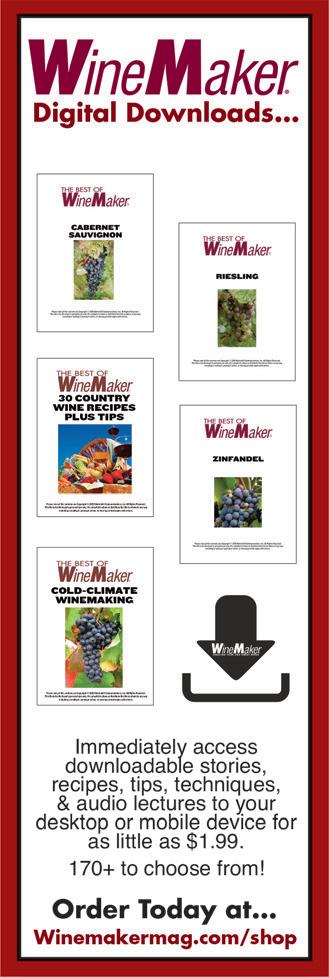
1. Time is the best fining agent.
2. I don’t tend to fine my wine, especially with animal products. It often just isn’t necessary. My sole exception is for my whites: Bentonite and then use Celstab/ CMC to avoid cold stabilization issues. It’s a game changer!
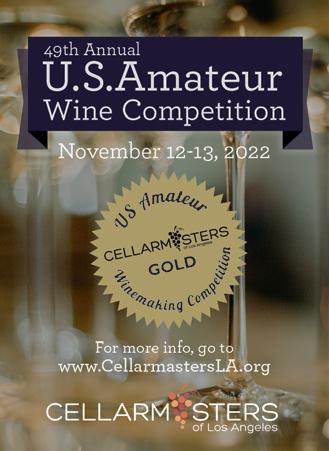
1. Picking grapes too early or too late.
2. Inappropriate must adjustment.
3. Not understanding the destructive power of oxygen.

4. Not understanding the constructive power of oxygen.
5. Keeping inadequate records.
Most importantly: Keep good records, do your bench trials before making additions, and HAVE FUN!
Winemaking itself is an accumulation of experiences starting from our first day, and over the time that follows we build on our knowledge base. We have all had little crush pad accidents, chemical addition errors, blending mistakes, and coming up short on bottles on the magical day. Oh, this is just the tip of the iceberg. Then we sit down with our friends and many bottles of wine on the table, and start to talk about that time when something happened. In the end, you and your friends end up laughing about it. That’s the way I like to admit my mistakes . . . over wine and laughter.
I covered this grape variety before, back in the April-May 2011 issue, but I didn’t give it many positive descriptions. I told readers it was a fickle grape with poor color and tannin structure. But my opinions have changed over time with more experience, not just with our focus on this issue’s variety but also with how I approach winemaking. Our topic today is Garnacha and I am taking an alternative look at some misconceptions I may have provided readers with previously. I cannot believe I couldn’t say everything good about the variety that is one of the most abundant in the world.
Garnacha is an old variety that has undergone many mutations. I have previously focused on Garnacha Tinta and Garnacha Blanco, but here we’ll bring in the Roja and Peluda versions as well. As the name implies, Garnacha was thought to be Spanish in origin. But, there’s always another theory
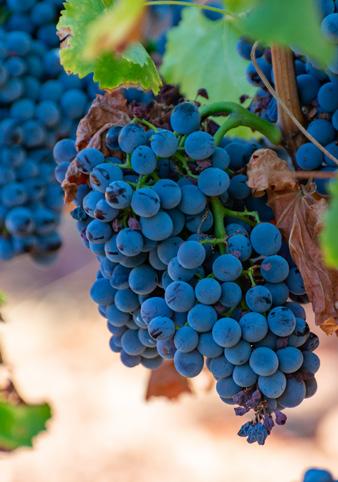

when it comes to Old World varieties. On the Italian island of Sardinia it has been known as Cannonau for centuries, hence raising the speculation that it is in fact an Italian variety. According to The Wine Bible by Karen MacNeil, both versions of the story are plausible. Without too much nitty-gritty detail, both Garnacha and Cannonau started appearing in historical records about the same time, but author Jancis Robinson leans towards its origins being Spanish in nature. Later, as it spread into France in the 18th century, it took on the French name Grenache as it was planted and grown across the south of the country.
Viticulturally the variety is drought tolerant with early budding and late ripening, making it ideal for growing in warm, dry climates. It is a vigorous variety but sometimes this doesn’t show through when grown in sandier soils. It is susceptible to downy mildew, Phomopsis, Botrytis bunch rot, grapevine bacteria necrosis, grape moth damage, and millerandage. (In case you didn’t know, millerandage is more commonly known as shatter or coulure (FR.) where there is incomplete fruit set due to adverse weather conditions at flowering.)
Garnacha can mature with very high sugar levels while maintaining moderate acidity levels, which vary depending on the cropping level. Color can be challenged with higher crop levels. Its longevity can be attributed to its relative resistance to esca (black measles) and Eutypa dieback. It can grow in lightly acidic soils, gravel or stony soils, and soils high in limestone. It is best pruned as headtrained vines.
The most notable blend combination is with Syrah (Shiraz) and Mourvèdre (Monastrell), more commonly known as the GSM blend . . .
A grape with many facets
This is a simple way to make Garnacha from juice concentrate. Kits and fresh grapes are also available for this variety. If using a kit, be sure to consult the manufacturer’s specifications included with the kit for specific directions. If using juice concentrate, this recipe is a good guideline.
(5) 46-oz. (1.36-L) cans Garnacha or Grenache juice concentrate (~68–70 °Brix)
3.5 gal. (13.2 L) distilled water
10% potassium metabisulfite (KMBS) solution (Weigh 10 grams of KMBS, dissolve into about 50 mL of distilled water. When completely dissolved, make up to 100 mL total with distilled water.)
5 g EC-1118 (Lallemand or Scott Labs). Red Star Premier Cuvee can be used as a substitute.
5 g Diammonium phosphate (DAP)
5 g Go-Ferm
5 g Fermaid K (or equivalent yeast nutrient)
Malolactic fermentation starter culture (CHR Hansen or equivalent)
6-gallon (23-L) food-grade plastic bucket for fermentation
5-gallon (19-L) carboy
1–2 one-gallon (3.8-L) jugs (optional)
3-gallon (11-L) carboy (optional)
Racking hoses
Inert gas (nitrogen, argon, or carbon dioxide)
Ability to maintain a fermentation temperature of 70–75 °F (21–24 °C)
Thermometer capable of measuring between 40–110 °F (4–43 °C)
Pipettes with the ability to add in increments of 1 mL
Clinitest® tablets to measure residual sugar
1. Clean and sanitize all your winemaking tools, supplies, and equipment.
2. If refrigerated, warm distilled water to about 65 °F (18 °C). You will use 3.5 gallons (13.2 L) to dilute the concentrate. Add five cans of the juice concentrate, using the water to completely dissolve remaining concentrate in the
can. Mix well. In the end, you will have about 5.5 gallons (21 L) of juice in the bucket at about 22.5 °Brix.
3. Layer the headspace with inert gas and mix Fermaid K or equivalent yeast nutrient into the juice.
4. Prepare yeast. Heat about 50 mL distilled water to 108 °F (42 °C). Mix the Go-Ferm into the water to make a suspension. Take the temperature. Pitch the yeast when the suspension is 104 °F (40 °C). Sprinkle the yeast on the surface and gently mix so that no clumps exist. Let sit for 15 minutes undisturbed. Measure the temperature of the yeast suspension. Measure the temperature of the juice. You do not want to add the yeast to your cool juice if the temperature of the yeast and the must temperature difference exceeds 15 °F (8 °C). To avoid temperature shock, acclimate your yeast by taking about 10 mL of the juice and adding it to the yeast suspension. Wait 15 minutes and measure the temperature again. Do this until you are within the specified temperature range. Do not let the yeast sit in the original water suspension for longer than 20 minutes. When the yeast is ready, add it to the fermenter.
5. Initiate the fermentation at room temperature (75 °F/24 °C). You should see signs of fermentation within about one to two days. This will appear as some foaming on the juice.
6. Monitor the Brix and temperature twice daily during peak fermentation (10–21 °Brix). Maintain temperature between 70–75 °F (21-24 °C).
7. At about 15 °Brix, dissolve the DAP in a small amount of water and add to the fermenter.
8. When the wine is consistently less than 0 °Brix, inoculate with your malolactic (ML) bacteria. Check the manufacturer’s instruction on how to prepare and inoculate the malolactic bacterial culture.
9. Monitor the ML fermentation using a thin layer chromatography assay available from most home winemaking supply stores. Follow the instructions included in the kit.
10. When the ML fermentation is complete, add 2 mL of fresh KMBS (10%) solution per gallon (3.8 L) of
wine. This is the equivalent to ~40 ppm addition.
11. Place in a cool spot to settle.
12. Consider adding some French and American oak chips. Do not treat the entire lot of wine. Rather break down the 5 gallons (19 L) to smaller vessels and treat one of the fractions to blend back later.
13. After two weeks, test for pH and SO2. Adjust the SO2 as necessary to attain 0.8 ppm molecular SO2. (There is an SO2 calculator at www.winemak ermag.com/sulfitecalculator). Check the SO2 in another two weeks and adjust. Once the free SO2 is adjusted, maintain at this level. You’ll just need to check every two months or so, and before racking.
14. Rack the wine clean twice over 4–6 months to naturally clarify. Fining and/or filtration are generally not needed if SO2 levels are maintained and there are no surface films or indications of subsequent fermentations. Consult the magazine website for tips on fining and filtration if problems are evident.
15. Once the wine is cleared, it is time to move it to the bottle. This would be about six months after the completion of fermentation.
16. Make the project fun by having a blending party to integrate the oak fraction back into the unoaked fraction. You may not need it all, use your judgment and make what you like.
17. If all has gone well to this point, given the quantity made, it can probably be bottled without filtration. That said, maintain sanitary conditions while bottling. Once bottled, you’ll need to periodically check your work by opening a bottle to enjoy with friends. Have fun!
The recipe calls for specific additions of sulfur dioxide at specified intervals. Once these scripted additions are made, you must monitor and maintain 30–35 ppm. Adjust as necessary using the potassium metabisulfite solution described or other methods. Testing can be done at a qualified laboratory or in your home using one of the commercially available kits.
The Blanca (SP.) and Blanc (FR.) have the same viticultural characteristics, with the exception of mid-budding and less susceptibility to shatter. The Roja (SP.) and Gris (FR.) versions are a little more productive than Garnacha Blanca. The Peluda (SP.) version is characterized by downy undersides of the leaves; smaller, thick-skinned berries; and a little more acidity. The downy undersides help prevent heat damage to the vine by protecting transpiration and reflecting light.



The Tinta (SP.) and Noir (FR.) versions are often not seen as a varietal-labeled wine, being blended with other local varieties. The most notable blend combination is with Syrah (Shiraz) and Mourvèdre (Monastrell), more commonly known as the GSM blend, which you will find where the three grow together: France, the United States, Australia, and South Africa. You will find that all of the versions will thrive by having good placement in their local communes across France and Spain. Local AOC/AOP rules will govern
how it is grown in the vineyard and made into wine across much of southern France and Spain.

From a viticulture and winemaking point of view, work with the general premise that it can be prone to large crop levels. The larger crop levels can be fine depending on the mutation. If making rosé with the Tinta and Peluda mutants then higher crop levels may be acceptable, depending on the degree of color that is desired in the final wines. You will often see rosé versions with a lighter salmon/pink version of the wine. Consider a green harvest sometime around veraison if a deeper color is desired.
Due to fairly low polyphenolic concentration in Garnacha’s grape skins, all versions are reported to be susceptible to oxidation once they are in the winery. Protecting from excessive oxygen exposure and liberal use of sulfur dioxide will help push your wine towards a cleaner rendition. My
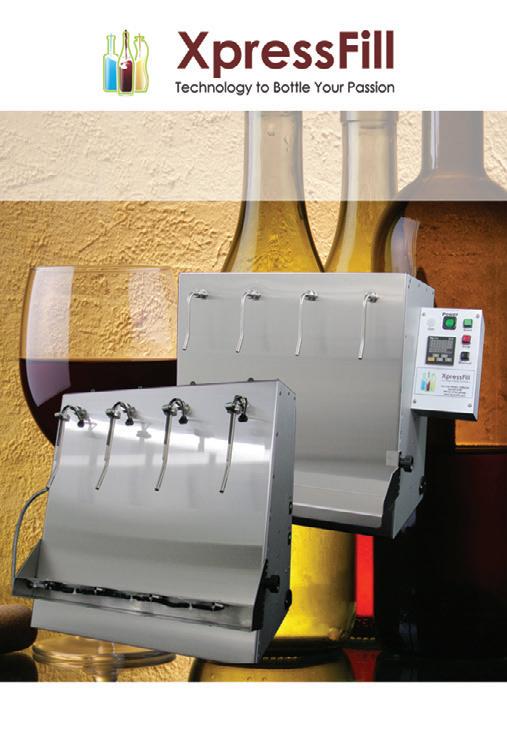
Garnacha can mature with very high sugar levels while maintaining moderate acidity levels, which vary depending on the cropping level.
general experiences with the Tinta and Blanca versions center on varietal dry red or white wines respectively.
Don’t feel the need to ferment the must hot or over-press the grapes in order to compensate for the lack of tannins. Fermenting these grapes lower and slower is generally the preferred approach.

When I was at UC-Davis I used to make up a GSM blend that the students had to try to match me on. With the wines that I was using it was very intriguing as to how little Syrah was needed to blend into the wine to give the color a big boost. The students were fooled almost every time.
Garnacha is not just limited to the dry red and white wines, it is also the basis for vin doux naturelle in southern France. The name literally translates to “wine sweet natural.” Any grape can be used for this, but locally Grenache is used for its versatility. Invented in the 13th century, the mutage process is a fortification of the wine. It involves adding a supplement of wine alcohol to the grape must in order to stop the fermentation and preserve some of the natural grape sugars.
The rules state that a neutral grape alcohol (95%) must be added. In reading the rules, it is added to the must at a minimum of 5% and maximum 10% by volume. The resulting total “alcohol richness,” a combination of the alcohol acquired and potential alcohol, can range from 15–21.5% by volume in most of the appellation d’origine protégée (AOP). There are initial Brix requirements for these wines as well; just over 25 °Brix is the minimum sugar level. I had to read the rules several times and I think I now understand them. But I believe I would most certainly make a mistake if I were to try crafting my own vin doux naturelle. At least I’ll admit it before the fact!
All versions of Garnacha pair well with a wide array of foods. As a varietal, it goes best with the lighter meats, chicken, lamb, pork, and some seafood dishes. Pairing up the Garnacha blends takes a little more thought. The more tannic GSM blends require red meat
to tone down the astringency; sometimes mild cheeses will do the trick as well. You don’t want anything that will overpower the fruit characters. So strong cheeses and spicy sauces are out unless there is a bit of residual sweetness to the wine, like in a vin doux naturelle.
Coming around full circle on this article, I have left my opinion in the “room next door” and pointed out the facts as presented from my references. The
column covering this variety from 2011 certainly presented some facts, but I was jaded by the versions of Garnacha I had experience with. I am a long-standing advocate of the right variety needs to be grown in the right place (OK – just a little opinion there) but returning to the facts, the fruit I was working with was not the right variety, and I was too naïve to understand that (fact . . . not opinion). There we have it . . . enjoy the wine and mea culpa.
ENTER YOUR BEST HOMEMADE WINES IN THE WORLD’S LARGEST COMPETITION FOR HOBBY WINEMAKERS!
DON’T WAIT — SEND YOUR ENTRIES NOW! ENTRY DEADLINE: MARCH 17, 2023
Enter your wines and compete for gold, silver and bronze medals in 50 categories awarded by a panel of experienced wine judges. You can gain international recognition for your winemaking skills and get valuable feedback on your wines from the competition’s judging panel.

Entry Deadline: March 17, 2023 5515 Main Street • Manchester Center, VT 05255 ph: (802) 362-3981 ext. 106 • fax: (802) 362-2377
email: competition@winemakermag.com
You can also enter online at: www.winemakercompetition.com


WineMaker of the Year
will be awarded thanks to our award sponsors:

Best of Show Red
Retailer of the Year
Best of Show White
U-Vint of the Year
Best of Show Dessert
Club of the Year
LALLEMAND BREWING
Best of Show Mead
Best of Show Country Fruit
Best of Show Sparkling
Best of Show Estate Grown
Best of Show Kit/Concentrate
Category Medals (gold, silver, and bronze) will be awarded thanks to our category sponsors:





18. Other White Vinifera Varietals

34. Red Table Wine Blend (Any Grape Varieties)
35. Blush Table Wine Blend (Any Grape Varieties)
36. Grape & Non-Grape Table Wine Blend
37. Apple or Pear Varietals or Blends
38. Hard Cider or Perry
39. Stone Fruit (Peach, Cherry, Blends, etc.)

GLCC Co.
40. Berry Fruit (Strawberry, Raspberry, Blends, etc.)
GLCC Co.
41. Other Fruits
GLCC Co.
42. Traditional Mead
43. Fruit Mead
Moonlight Meadery

44. Herb and Spice Mead
45. Flower or Vegetable
46. Port Style
47. Sherry Style
48. Other Fortified
33.
49. Sparkling Grape, Dry/Semi-Dry or Sweet
50. Sparkling Non-Grape
1. Entry deadline for wines to arrive is March 17, 2023
Wines are to be delivered to: Battenkill Communications
5515 Main Street
Manchester Center, VT 05255
Ph: (802) 362-3981
2. Send ONE (1) BOTTLE per entry. Still wines must be submitted in standard 750 ml wine bottles. Ice wines or late harvest wines can be submitted in 375 ml bottles. Meads and Hard Ciders can be submitted in 12 oz. or 22 oz. beer bottles. Sparkling wines must be in champagne bottles with proper closure and wire or crown cap. All bottles must be free of wax, decorative labels and capsules. However, an identification label will be required on the bottle as detailed in rule #5.
3. Entry fee is $30 U.S. dollars (or $30 Canadian dollars) for each wine entered. Each individual person is allowed up to a total of 15 entries. You may enter in as many categories as you wish. Make checks payable to WineMaker. Only U.S. or Canadian funds will be accepted. On your check write the number of entries (no more than 15 total) and the name of the entrant if different from the name on the check. Entry fees are non-refundable.
4. All shipments should be packaged to withstand considerable handling and must be shipped freight pre-paid. Line the inside of the box with a plastic trash bag and use plenty of packaging material, such as bubble wrap, around the bottles. Bottles shipped in preformed styrofoam cartons have proven reliable in the past. Every reasonable effort will be made to contact entrants whose bottles have broken to make arrangements for sending replacement bottles. Please note it is illegal to ship alcoholic beverages via the U.S. Postal Service. FedEx Air and FedEx Ground will destroy all amateur wine shipments so do not use either of these services. Private shipping companies such as UPS with company policies against individuals shipping alcohol may refuse your shipment if they are informed your package contains alcoholic beverages. Entries mailed internationally are often required by customs to provide proper documentation. It is the entrant’s responsibility to follow all applicable laws and regulations. Packages with postage due or C.O.D. charges will be rejected.
5 Each bottle must be labeled with the following information: Your name, category number, wine ingredients, vintage.
Example: K. Jones, 9, 75% Baco Noir, 25% Foch, 2020. If you are using a wine kit for ingredients please list the brand and product name as the wine ingredients. Example: K. Jones, 22, Winexpert Selection International French Cabernet Sauvignon, 2021. A copy of the entry form, listing each of your wines entered, must accompany entry and payment.
6. It is entirely up to you to decide which of the 50 categories you should enter. You should enter each wine in the category in which you feel it will perform best. Wines must contain a minimum of 75% of designated type if entered as a varietal. Varietals of less than 75% must be entered as blends. To make sure all entries are judged fairly, the WineMaker staff may re-classify an entry that is obviously in the wrong category or has over 75% percentage of a specific varietal but is entered as a blend.
7. Wine kits and concentrate-based wines will compete side-by-side with fresh fruit and juice-based wines in all listed categories.
8. The origin of many Native American grapes is unknown due to spontaneous cross-breeding. For the purposes of this competition, however, the Native American varietal category will include, but is not limited to, the following grape families: Aestivalis, Labrusca, Riparia and Rotundifolia (muscadine).
9. For sparkling wine categories, dry/semidry is defined as <3% residual sugar and sweet as >3% residual sugar.
10. Contest is open to any amateur home winemaker. Your wine must not have been made by a professional commercial winemaker or at any commercial winery. No employee of WineMaker magazine may enter. Persons under freelance contract with Battenkill Communications are eligible. No person employed by a manufacturer of wine kits may enter. Winemaking supply retail store owners and their employees are eligible. Judges may not judge a category they have entered. Applicable entry fees and limitations shall apply.
11. All wines will be judged according to their relative merits within the category. Gold, silver and bronze medals within each category will be awarded on point totals and will not be restricted to the top three wines only (for example, a number of wines may earn enough points to win gold). The Best of Show awards will be those wines clearly superior within those stated catego-
Entry deadline for wines to arrive in Vermont: March 17, 2023
Wines judged: April 21-23, 2023
Results first announced at the WineMaker Magazine Conference in Eugene, Oregon June 3, 2023
(Results posted June 4, 2023 on winemakermag.com)
ries. The Grand Champion award is given to the top overall wine in the entire competition.
12. The Winemaker of the Year award will be given to the individual whose top 5 scoring wine entries have the highest average judging score among all entrants.
13. The Club of the Year, Retailer of the Year and U-Vint of the Year awards will be based on the following point scale: Gold Medal (or any Best of Show medal): 3 points
Silver Medal: 2 points
Bronze Medal: 1 point
The amateur club that accumulates the most overall points from its members’ wine entries will win Club of the Year. The home winemaking retail store that accumulates the most overall points from its customers’ wine entries will win Retailer of the Year. The U-Vint or On-Premise winemaking facility that accumulates the most overall points from its customer’s wine entries will win U-Vint of the Year.
14. The Best of Show Estate Grown award will be given to the top overall scoring wine made with at least 75% fruit grown by the entrant. Both grape and country fruit wines are eligible.
15. All entrants will receive a copy of the judging notes for their wines. Medalists will be listed by category online.
16. All wine will become the property of WineMaker magazine and will not be released after the competition.
17. All decisions by competition organizers and judges are final.
Deadline: March 17, 2023
Entry Fee: $30 (U.S.) or $30 (Canadian) per wine entered
Number of entries _____ x $30 (US) or $30 (CD) = $________Total (limit of 15 entries per person)
q Enclosed is a check made out to “WineMaker” in the amount of $_________.
Name___________________________________________________________________________
Address_________________________________________________________________________
City________________________State/Prov______Zip/Postal Code____________________
Telephone_______________________________________________________________________
E-Mail____________________________________________________________________________
Winemaking Club:________________________________________________________________
Winemaking Retailer:_____________________________________________________________
U-Vint / On-Premise Store:________________________________________________________
Wine Ingredients and Percentage: Please list fruit varieties and percentages used in each wine. Example: “75% Baco Noir, 25% Foch.” If you are using a wine kit for ingredients, please list the brand and product name as the wine ingredients.
Example: “Winexpert Selection International French Cabernet Sauvignon.”
Wine 1 Entered:
Category Number__________________________________________________________
Category Name____________________________________________________________
Wine Ingredients and Percentage
Vintage ____________________________________________________________________
Are at least 75% of the ingredients grown by you? q yes q no q I feel it necessary to decant this wine_______hours before serving.
Wine 2 Entered:
Category Number___________________________________________________________
Category Name____________________________________________________________
Wine Ingredients and Percentage
Vintage ______________________________________________________
Are at least 75% of the ingredients grown by you? q yes q no q I feel it necessary to decant this wine_______hours before serving.
Wine 3 Entered:
Category Number__________________________________________________________
Category Name____________________________________________________________
Wine Ingredients and Percentage
winemakercompetition.com
Remember that each winemaker can enter up to 15 wines. If entering more than eight wines, please photocopy this entry form. Entry shipment includes ONE BOTTLE of wine per entry. 750 ml bottle required for still wines. Ice or late harvest wines can ship in 375 ml bottles. Still meads can ship in 12 oz. or 22 oz. beer bottles. Sparkling wines must ship in champagne bottles with proper closure and wire or crown cap.
Send entry form and wine to:
Battenkill Communications
5515 Main Street
Manchester Center, VT 05255
Ph: 802-362-3981 • Fax: 802-362-2377
E-mail: competition@winemakermag.com
If entered online at winemakercompetition. com, please print a copy of your entry form and send it along with your wine.
Wine 5 Entered:
Category Number_________________________________________________________
Category Name____________________________________________________________
Wine Ingredients and Percentage
Vintage ______________________________________________________
Are at least 75% of the ingredients grown by you? q yes q no q I feel it necessary to decant this wine_______hours before serving.
Wine 6 Entered:
Category Number__________________________________________________________
Category Name____________________________________________________________
Wine Ingredients and Percentage
Vintage ______________________________________________________
Are at least 75% of the ingredients grown by you? q yes q no q I feel it necessary to decant this wine_______hours before serving.
Wine 7 Entered:
Category Number__________________________________________________________
Category Name____________________________________________________________
Wine Ingredients and Percentage
Vintage ______________________________________________________
Are at least 75% of the ingredients grown by you? q yes q no q I feel it necessary to decant this wine_______hours before serving.
Wine 4 Entered:
Category Number___________________________________________________________
Category Name____________________________________________________________
Wine Ingredients and Percentage
Vintage ______________________________________________________
Are at least 75% of the ingredients grown by you? q yes q no q I feel it necessary to decant this wine_______hours before serving.
Enter online at: winemakercompetition.com
Vintage ______________________________________________________
Are at least 75% of the ingredients grown by you? q yes q no q I feel it necessary to decant this wine_______hours before serving.
Wine 8 Entered:
Category Number__________________________________________________________
Category Name____________________________________________________________
Wine Ingredients and Percentage
Vintage ______________________________________________________
Are at least 75% of the ingredients grown by you? q yes q no q I feel it necessary to decant this wine_______hours before serving.
“More attention to ullage management and SO2 levels would help.”
“Pay closer attention to overall fermentation health.”

“Prioritize cellar hygiene.”


 by Phil Plummer
by Phil Plummer
f you entered wines in the 2022 WineMaker International Amateur Wine Competition and your scoresheets were marked with one or more of the abbreviated suggestions on the facing page, there’s a strong chance your wines were evaluated by Judge 21, yours truly. For a few days in April, I had the pleasure of tasting amateur wines from around the world with a diverse team of thoughtful and talented wine judges. The creativity and care expressed in the wines were obvious, but as the flights continued to pile up, I realized that I was giving a lot of the same commentary from wineto-wine. Often, it seemed like a few common, preventable flaws were stifling wines that would have otherwise been delightful. The limited time and space allotted to make suggestions on the scoresheets felt insufficient, and I even considered leaving my contact information on a few because I thought a broader conversation might be helpful. This feeling nagged at me for a few weeks before I realized I had the perfect platform I’d hoped for all along: This magazine!
I’m not trying to push a perfectionist winemaking ethic here; far from it, in fact. I’m as aware as anyone that a flaw can present as a beauty mark in the right context. Furthermore, it’s important to keep in mind that many of the classes of chemical compounds in wines have both pleasant and unpleasant examples — courting the pleasant ones sometimes creates the perfect conditions to generate or hang on to the unpleasant ones. A hint of volatile acidity might amplify the red fruit aromas of a rich, bold Sangiovese. A little hydrogen sulfide might be tolerable in Sauvignon Blanc if it’s reflective of the reductive winemaking needed to preserve that variety’s signature thiol aromatics. There are real-world instances of technical flaws improving or at least not ruining a wine, but those aren’t what I intend to talk about.
When I pitched this article, I realized a discussion of how wine competitions work might help to explain why flaws factor so heavily in scoring. After all, many of the world’s great commercial wines are far from flawless; occasionally, as mentioned, a flaw here or there might even make a wine more appealing. So why doesn’t that hold true in the context of a wine competition? It’s simple, really: Wine competitions are all about first impressions. Think of it like dating — in a perfect world, you’d get to spend
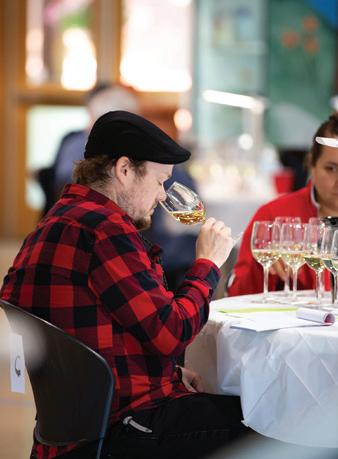
some quality time with a wine, learning about what made it the way it is, where it’s been, where it’d like to be, not leaving a single stone unturned or question unasked. Wine competitions, though, they’re a lot like speed dating. The sheer volume of wines to be tasted over a short period of time necessitates that judges develop a streamlined heuristic to speed up the process — often this places priority on seeking out a wine’s red flags: Flaws. Whether a red flag is a deal breaker (crossing the boundary between flaw and fault) or not is another question; sometimes a flaw is present for stylistic reasons, sometimes it’s just not offensive enough to spur fixation. Regardless, the mere presence of a detectable flaw is almost always reflected in a wine’s overall score — learning how to prevent and address some of the most common ones is a surefire way to improve your medal count.
TESTING . . . 1, 2, 3
Eighteenth century wine enthusiast Ben Franklin once said “An ounce of prevention is worth a pound of cure.” He wasn’t talking about wine flaws, but he very well could have been. Most of the flaws present in wine are totally preventable, but without an understanding of a wine’s chemistry, it’s difficult to know where issues may arise. I’m not advocating that winemakers take a recipe-style approach, chasing the perfect pH or Brix, but knowing where a few key analytical data points stand can mean the difference between effortlessly preventing flaws or scrambling to correct them. For that reason, I’m of the belief that one of the most meaningful upgrades that can be made to any home winery is an increase in analytical capability. Analytical data, when used correctly, is almost like a GPS system for the winemaking process. It’s not going to take control of your steering wheel, but it can tell you where to turn and what hazards may lay ahead.
While most home winemakers are acquainted with some level of juice or wine analysis — that’s what you’re doing every time you take a hydrometer reading — the data points that
have the greatest impact on the quality of a wine used to be tough to quantify at an amateur scale. Until very recently, the affordability of an analytical device and its accuracy almost always had an inverse relationship. A book of litmus paper and pack of titrets might only set you back $20–30, but the pH and free SO2 numbers they provide are far from reliable. On the other end of the spectrum, an OenoFoss analyzer can provide accurate, robust analyses, but the vast majority of amateur winemakers probably aren’t looking to drop tens of thousands of dollars for that data.
Luckily, there are solutions available that close the gap quite a bit; for a few hundred bucks, a home winemaker can cobble together a pretty effective wine lab. A simple pH meter and aeration-oxidation kit (for determining free SO2) can be had for under $200. For a few hundred dollars more, instruments like those available from Vinmetrica can perform these and other analyses, including yeast assimilable nitrogen (YAN), malic acid, and dissolved oxygen.
There are a maddening number of chemical data points in any juice or wine, but there are three that have an outsized impact on the sorts of flaws that inspired this article: Free SO2, pH, and YAN. Being able to adequately monitor each can have immediate and positive effects on overall wine quality. Let’s take a closer look at each.
Though they’re entirely different classes of flaws, oxidation and reduction are best understood as occupying opposite ends of the same chemical spectrum. In the most generic sense, compounds are said to be oxidized when they lose electrons, and reduced when they gain electrons. In the context of wine, oxidation and reduction center around two key elements: Oxygen and sulfur. When excess oxygen is dissolved into a wine or must, it behaves as an oxidizing agent, interacting with polyphenols and ethanol, thereby altering the flavor, aromatic profile, and color of the end product.
On the other end of the spectrum,
the anaerobic conditions of fermentation result in the reduction of sulfur and sulfur-containing compounds, producing less-than-pleasant aromatics like hydrogen sulfide and mercaptans. If you read those last two sentences and they seem incongruent, that’s because they are. The maddening aspect of the redox (or oxidation-reduction) spectrum, as it applies to winemaking, is that a push just a little too far in either direction leads to flawed wines. Making things more difficult, the stage of the winemaking process and condition of the wine often necessitates a significant push in either direction. If that wasn’t daunting enough, the style of wine and initial juice chemistry will have a potent impact on defining that wine’s redox “sweet spot.” Understanding how and when to thread the needle between oxidation and reduction is of paramount importance in the production of technically excellent wines.
Far and away the most prevalent flaw that I encountered at this year’s competition, oxidation, is as obvious as it is preventable. Its signature brown hue and bruised apple aroma, though quite welcome in the Sherry categories, extended across all entry classes. Though myriad oxidized compounds may be present in these wines, one is particularly responsible for its organoleptic effect: Acetaldehyde. Acetaldehyde is formed by the oxidation of ethanol, and is present in wine throughout the winemaking process. At different stages of the process for certain wines, acetaldehyde is actually beneficial. In the midst of alcoholic fermentation, for instance, acetaldehyde may form the chemical bridge that chains anthocyanins to tannins. Additionally, it may be actively consumed by both yeast and malolactic bacteria, limiting its sensory impact. If acetaldehyde is allowed to accumulate post-fermentation, it will begin to make its presence known aromatically. Luckily, the wine world’s most celebrated preservative, sulfite, does an excellent job of reducing acetaldehyde back to a non-detectable compound. There is, however, a catch: Once the sulfite is
bound, it’s no longer available to reduce more acetaldehyde molecules. Only the free SO2 remains as an oxidation buffer. Maintaining a healthy free SO2 level (generally 10–20 ppm over the desired molecular SO2 level — more on that later) is an effective method of heading off acetaldehyde.
While oxidation may be observed in both red and white wines, reds tend to be a bit more resilient against this flaw. This is because the highly concentrated polyphenols in red wines serve as an effective redox buffer, reducing oxygen molecules to catalyze their polymerization. In fact, much of the magic of red wine aging is simply oxidation — lengthening and softening tannin polymers until the redox buffer is gone, at which point further oxidation trends in the direction of flaw. For this reason, the simple exclusion of oxygen in the red winemaking process is a mistake, limiting the winemaker’s ability to effectively shape the aroma and texture of the finished product, leading to wines that are aromatically unappealing and texturally unpleasant. More effective is a nuanced approach to oxygen management — allowing significant oxygen exposure through the fermentation process and tapering it down as the wine ages. This may
be accomplished by open fermentation with vigorous splashing, punching down, and racking, followed by aging in porous vessels like barrels or FlexTanks. As the wine comes out of aging and heads toward bottling, the approach to oxygen management should be the same as those used in the production of white wines.
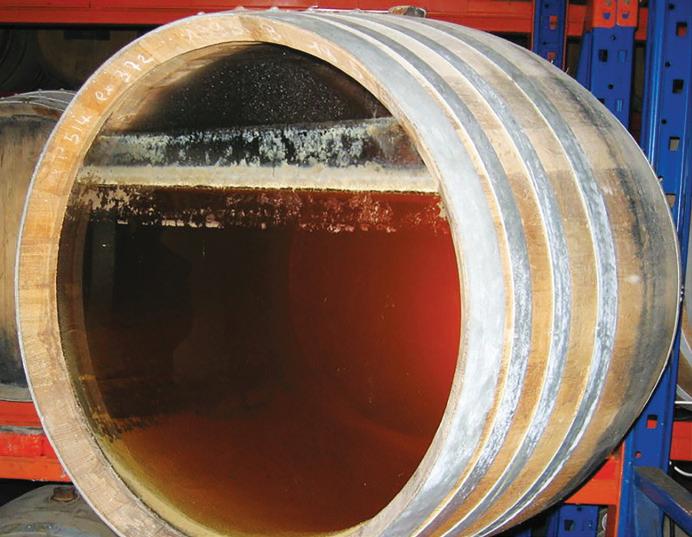
For white wines, managing oxygen is profoundly important. Without the potent redox buffers present in reds, white wines are relatively exposed. Furthermore, the few polyphenols present in white wines are highly prone to oxidation, which can lead to browning of the wine’s color. Hyperoxidation (oxidizing the unfermented juice) at the juice stage may help to remove some of these phenolic compounds pre-fermentation, softening the textural profile of the wine and removing oxidation-prone precursors before they can become a problem. Preventive or corrective fining with agents like PVPP (Polyvinylpolypyrrolidone) or casein are also effective means for limiting phenolic oxidation. Following fermentation, however, the main avenue available for the prevention of oxidation is to limit the wine’s dissolution of oxygen.
This may be accomplished in a variety of ways, but there are two ob-
vious ones that will have immediate effects on wine quality. First among these is ullage management. Ullage refers to the amount of empty space left in a storage vessel after it has been filled with wine. This space isn’t technically empty; it’s full of oxygen-containing air that will happily interact with the wine in the vessel. The simplest way to manage ullage is to use containers that are appropriately sized for the volume of the wine that they’ll be holding so there is as little air as possible in the vessel, but this isn’t always practical. In the case that this isn’t possible, ullage may be effectively managed by flushing the vessel and blanketing the headspace with an inert gas like argon. Another way to limit oxygen dissolution is to decrease the frequency and vigor of wine movements. Every racking is an opportunity to dissolve oxygen into the wine, so racking gently (avoiding any sort of splashing) and as infrequently as possible goes a long way to preserving wine against oxidation.
Following oxidation as the second-most prevalent flaw observed at this year’s competition is its opposite: Reduction. Reduction in wine most commonly refers to the reduced sulfur compounds hydrogen sulfide, mercaptans, and disulfides, produced under the anaerobic conditions of fermentation. Characterized by aromas of rotten egg, rubber, skunk, or canned vegetables, reduced sulfur compounds are most often yeast-derived, resulting from unhealthy fermentation or extended contact with lees. Though some reduced sulfides are unpleasant aromatically, there are plenty that are actually desirable in wine; it’s fashionable to refer to pleasant mercaptans as thiols, and thiols are responsible for citrus, tropical, and cassis (blackcurrant) aromas in wine. Unfortunately, creating the conditions necessary to leverage these pleasant sulfides usually means there’s a risk of some of the stinky ones entering the fray.
As artifacts of unhealthy fermentation, reduced sulfides are effectively prevented by improvements to overall fermentation health — first among them is yeast nutrition. In addition to
sugar, a source of nitrogen is required for yeast to carry out fermentation, and if YAN is insufficient, sulfides will accumulate as a byproduct of amino acid production. The ideal YAN content of a given fermentation may be affected by yeast strain, fermentation conditions, or sugar content, but most fermentations generally require 150–200 ppm YAN. If the YAN content of a must requires adjustment, complex yeast nutrients like Fermaid K and inorganic nitrogen sources like diammonium phosphate (DAP) may be utilized. A word of caution, however: Any nitrogen left over following fermentation may become an attractive buffet for spoilage yeasts or bacteria. Targeting YAN precisely will not only prevent reduction, but also limit the chances of microbial spoilage.
If a wine is judged to have a reduction issue, a few steps can limit or remove it. Early identification of reduced sulfur in the wine is key, as unhealthy lees may continue to release sulfides into the wine. Vigorously racking the wine off its lees will decrease the chances of additional sulfides, and may even blow away some of those present. If splash racking is performed directly following fermentation, enough carbon dioxide will remain in solution to prevent oxidation. In the case that sulfides persist even after vigorous racking, an addition of copper sulfate may be employed to remove them. However, copper sulfate will remove pleasant sulfides as effectively as the unpleasant ones, so performing a bench trial and limiting its use may help to maintain aromatic complexity. In a commercial setting, the legal limit for a copper addition is 6 ppm, but this is an incredibly heavy-handed dose. Bench trials for copper treatment around the residual copper limit of 1 ppm often show the necessary aromatic improvement without risking further thiol removal.
Following oxidation and reduction, the third most common flaw I encountered at this year’s competition was of the microbial variety. The spoilage mechanisms on display ran the gamut from acetic acid bac-
teria to Brettanomyces, and were observed across categories. Whether announced by volatile acidity, volatile phenols, or worse, these spoilage microbes made their presence known and the wines that they contaminated reflected that in their scores. Though prevalent, microbial spoilage is equally as preventable as oxidation and reduction, and may be avoided with diligent attention to cellar hygiene and proper sulfite management.
I often joke that winemaking is almost 90% sanitation, and while the figure may be an exaggeration, the sentiment is not. The simplest way to prevent microbial flaws is to limit the ability of spoilage microbes to come in contact with your juice or wine. Thoroughly cleaning any organic material off of your winemaking equipment prior to rinsing with a citric acid and sulfite solution or other sanitizer should limit the chances of contamination. Some caution must be taken, however, to avoid using chlorine-based sanitizers like bleach or C-Brite, as those may form anisoles — the class of organic compounds responsible for cork taint.
In the wine itself, the same measures taken to limit oxidation will also help to prevent microbial flaws. Chief among them is maintaining a proper level of free SO2. Though quantified together, free SO2 exists in wine in two main forms: Molecular SO2 and bisulfite. Of these forms, molecular SO2 is the one with antimicrobial properties. As molecular SO2 concentration is affected by pH — concentration goes up as pH goes down — understanding a wine’s pH is critical for determining proper free SO2 levels. The concentration of molecular SO2 in any given wine may be calculated if the wine’s pH and free SO2 are known, and calculators like the one available at https://winemaker mag.com/guide/sulfite or at www. winebusiness.com/calculator/wine making/calc/60 make it even simpler. The specific concentration of molecular SO2 required to prevent microbial spoilage depends upon the specifics of the wine itself, but a concentration between 0.8 and 1.2 ppm is recommended for whites and wines with
residual sugar, while a concentration between 0.6 and 0.8 ppm is sufficient for dry reds.

For wines that show signs of microbial contamination, there isn’t much outside of blending that may be done to correct them, but steps may be taken to limit the damage. First, sterile filtration (<0.45 microns) may be used to remove any remaining spoilage microorganisms. The wine should then be adjusted to the desired molecular SO2 level and stored in an appropriately sized container to limit ullage. Not only will this preserve SO2 levels, but it will also limit dissolved oxygen — an important resource for aerobic microbes like the ones that spoil wine.
A quick aside before leaving the discussion of microbial spoilage: Potassium sorbate, while effective at preventing re-fermentation by yeast, is an attractive carbon source for a myriad of spoilage bacteria and may be metabolized to form unwanted aromatic compounds like geraniol. Furthermore, sorbate forms the bubblegum-like aromatic compound ethyl sorbate when it reacts with ethanol, which might not be offensive in sweet, grapey Concord wines, but isn’t welcome in a bone-dry Riesling. I’m well aware that sorbate is an effective tool for home winemakers looking to prevent in-bottle fermentation, but I saw evidence of its use in wines that absolutely did not need it — those wines scored lower than they would have without the addition of sorbate. As a rule, sorbate should always be used in conjunction with sulfite, added immediately before bottling, and only in wines where residual sugar is desired.
Part of what makes winemaking fun is the subjectivity of it. Everybody has a different set of aromatic, textural, and flavor preferences, and that’s on display in every wine competition. While personal preference informs whether or not you enjoy a wine, most wine judges know that like or dislike isn’t what they’re being asked to evaluate. The parameter that is most import-
ant to assess when judging a wine is how well it was made. Whether it’s a fresh, sweet Niagara or a bold, dry Cabernet, the correctness and cleanliness of a wine ultimately means far more than the personal quirks of a judge’s palate.
Though it’s true that a flaw here or there might actually make a wine more charming, the pace and demands of a wine competition mean that flaws are generally a key factor
in determining a wine’s score. Luckily, most of the flaws seen in wine competitions are easily preventable if you know what to look out for and act accordingly.
Now that you know a little more about some of those preventive steps, it’s time to put them to work in your home cellar. If you follow this advice and diligently defend against common flaws, I’m willing to bet it’ll show in your medal count next year.

 by Jenne Baldwin-Eaton
by Jenne Baldwin-Eaton
he quality of wine first starts in the vineyard with the health and ripeness of the grapes. The next important step in the quality of the wine is fermentation, which is the sole responsibility of the winemaker. Fermentation is hard to visualize due to the fact that yeast are only 0.8 to 1.0 micron in size and performing complicated and critical pathways within the yeast cell. We must rely on knowledge gained through research, each fermentation experience, and most importantly, our senses. With each fermentation I learn something new to bring to my next fermentation; no two are alike. Whether you are new to winemaking or have years of experience, fermentation is a complicated process, but so important to the consistency and quality of the wine. At the beginning it can feel like you are learning more of what not to do than what to do — don’t let that discourage you, the important thing to remember is that you are gaining experience and knowledge with each fermentation.
There are so many decisions and variables to make with regards to fermentation — the yeast are in control and you are doing your best to point them in the right direction. By learning the specific needs of the yeast, how to keep them happy and avoid stress, we keep them on track toward turning our juice into wonderful wine. When yeast are stressed they will excrete hydrogen sulfide that is produced within the cell as part of the amino acid synthesis pathway. This hydrogen sulfide is then excreted from the cell into the wine. This is the yeast’s way to tell us they are not happy. Unfortunately, they can’t tell us why they are not happy or what is causing the stress. Stress on yeast can also affect whether the fermentation completes, converting all the sugar to alcohol and reaching dryness.
There are two approaches we can take with fermentation; we can be reactionary or proactive. As a home winemaker we start by being reactionary to our ferment, checking the Brix levels, temperature, and performing sensory analysis. As we increase our experience, knowledge, and technology we can become more of a proactive winemaker, calculating exact numbers, and dialing in our ferments. Being proactive is important for the consistency and quality needed to make great wines.
For all winemakers, but especially those new to winemaking and fermentation, I suggest recording this information: Brix, smell/taste, temperature, and date. Write it on a log that allows you to track and evaluate your ferment at a single glance. You can use this as a reference during fermentation or post-fermentation for analysis and reflection. The Brix level lets you know where you are in the life cycle of the yeast and the rate the Brix is dropping daily. Smelling, tasting, and observation gives you clues of where you are in the life cycle and the first sign of stress to the yeast. Start building up your sensory library by tracking daily as this will help you recognize when something changes or doesn’t seem to follow the usual
fermentation pattern. Planning or mapping out each fermentation will help you stay on track and help you become more proactive. When your supplies arrive, read directions and develop your protocols for rates, temperature range, rehydration temperature, calculations, and additions. This will be a nice reference sheet as we need to react as soon as possible during fermentation — having this information available when you need it will help solve problems when they arise. There is not much time during harvest for researching — you might have multiple batches fermenting at one time and need a quick reference sheet that was made when there was time to think and plan each individual wine based on the style. I am a big proponent of writing everything down during harvest, then when things calm down going back through and making notes for the next harvest. I have datasheets on every wine I have made since 1994 — it is a great database. If you were to ask any of my students (over many years as a viticulture and enology professor) an important aspect of winemaking, they would all answer in unison “write it down!”
Reminder before we dive into the deep end on fermentation to make sure to clean all equipment after use and sanitize prior to use. Not only can grapes come in with hundreds of
species of microbes, but the area you are using for winemaking can have its own flora. We don’t want spoilage microbes as part of that flora. These microbes can be competition to your commercial yeast, taking over the fermentation and converting sugar into other things like acetic acid or spoiling the wine. Microbe competition is something you have control over by keeping your space and equipment clean and sanitized. When we stress our yeast, we run the chance of a sluggish or stuck fermentation, or production of hydrogen sulfide. Any hydrogen sulfide problem should be corrected as soon as possible; problem solving when we can still do something about it is better than realizing after fermentation that you have a problem. Any hydrogen sulfide production will mask the fruit, decrease quality, and can progress to unpleasant aromatics like rotten eggs, cabbage, garlic, onions, and rubber, rendering the wine undrinkable. When we produce hydrogen sulfide, this can further react with other wine materials forming mercaptans, and possibly oxidizing into disulfides.
Yeast go through four phases in their life cycle: Lag phase, log phase, stationary phase, and death phase (illustrated in Chart 1). The lag phase consists of the yeast getting used to
their environment, this can last 2448 hours with a commercial yeast or almost a week for a natural fermentation. If you add nitrogen at the same time you inoculate your yeast, you could be feeding other microbes that came in on the grapes, giving them the food they need to build in population. During the lag phase, there is no production of carbon dioxide, but you will smell a fresh baked bread component.
As we move into the log phase, we will see a small amount of carbon dioxide produced, the temperature will start to rise, and we will see a 2–4 °Brix drop. It is at this time that we could add nitrogen if we believe we are deficient, as nitrogen is important for building healthy new cells. The log phase is where we have exponential growth of the yeast, the yeast is used to their environment and start to multiply, building new yeast cells. The yeast will multiply 3–4 times during an alcohol fermentation, and we need those fourth-generation yeast to carry out the fermentation. Temperature becomes much harder to control during this phase because of the exponential growth. The baked bread component is gone, and you
will smell the fruit of your starting ingredient come through.
We reach the end of the log phase and enter the stationary phase onethird of the way through fermentation. The growth and death of yeast are equal, and the primary function moves from growth of new cells to metabolizing the sugar to alcohol. The beginning of the stationary phase is another time to add nitrogen as most of the nitrogen is gone from the log phase and the yeast need food to finish converting all sugar to alcohol. It is recommended to not add any nitrogen past 8 °Brix remaining because yeast have stored nitrogen internally and can no longer bring the nitrogen into the cell. Carbon dioxide is still present, temperature is not as hard to control, and we start to smell more of the fermentation bouquet coming through.
Fermentation will finish in the death phase, which begins around 5 °Brix. The drop in Brix slows down drastically. We can allow the temperature to rise to eliminate that as a stress and stir the sediment at the bottom. Due to the alcohol percentage increasing we see more yeast death due to toxicity and as they pre-

cipitate they will take live yeast with them trapping them in the sediment. By stirring your vessel you can redistribute the live yeast back up to keep converting sugar to alcohol. This process will release some carbon dioxide, or you can add inert gas into the headspace as protection. Your wine is very susceptible to oxidation at this stage because of the lack of carbon dioxide being produced so take measures to not allow oxygen to sneak into the wine. It’s always better to start stirring when you see sediment collecting in the bottom or when you see Brix really slow down. If you wait for it to stop and then try to get it going again, it’s usually too late.
I realize this is a lot of information; as you’re tracking your fermentations you will start to see the different phases and it will start to make more sense. Perhaps all your ferments have gone through successfully thus far, it’s when something happens that we need to problem solve. Each harvest I usually had one or two lots that had issues either during fermentation or post-fermentation — remember we are not the ones in the driver seat. Knowledge and experience become tools in our tool belt for solving issues.
Next, let’s look at four components that can influence the quality of the wine or can cause a sluggish or stuck fermentation — yeast cell density, temperature, high alcohol, and nitrogen deficiency. A sluggish or stuck fermentation opens the door to oxidation, spoilage, and leaves residual sugar that can be used by other microbes.
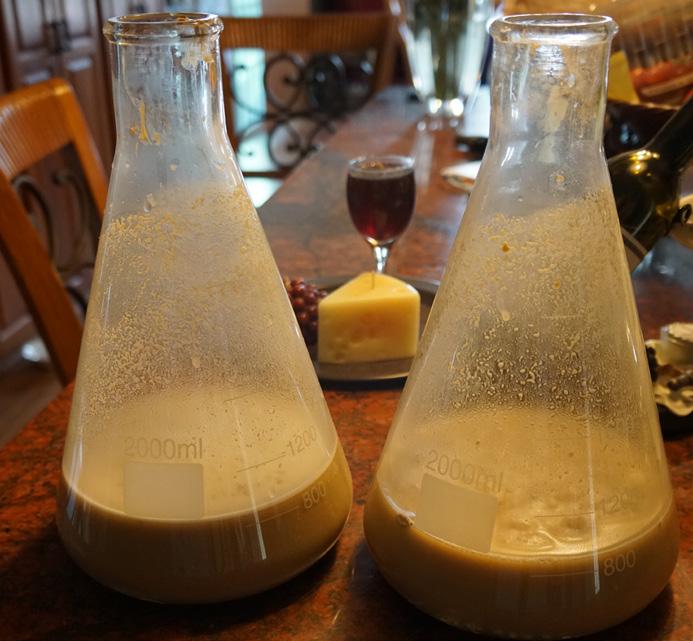
Each manufacturer has different parameters that are best for the proper use of their yeast. Most of these strains are in a dried state and rehydration is necessary prior to inoculating. Read the instructions for calculating the rate and the critical temperature that should be used for rehydration. In general, the higher our starting Brix the higher rate we will use to calculate the amount of yeast needed. Higher sugar levels cause more osmotic pressure in the yeast cell, which can be toxic to the cell and death can occur; we use a higher rate taking this into consideration. Manufacturer rates give us the recommended cell density of yeast that we need for a successful fermentation. A low cell density at the beginning of fermentation or improper rehydration can affect whether you will complete fermentation. Follow directions exactly for proper rehydration guaranteeing that you start with a strong yeast cell density. The overwhelming majority of stuck fermentations are caused by not following the directions for rehydration.
Each yeast strain has an optimal temperature range for use during fermentation. If your ferment goes out of that range this can be very stressful to the yeast and hydrogen sulfide may be released from the yeast cell and into the wine as a result. We will risk the yeast going into a hibernation state if fermentation gets too cold. If it gets too warm we risk blowing off all the fruit character, giving the wine a hot or high-alcohol sensation. In general, the larger the fermenter the more difficult it becomes to control the temperature. Fermentation produces alcohol, carbon dioxide, and heat — the larger the mass the more
heat produced. A benefit to being in a commercial winery is the ability to have temperature control on tanks, however, these are not fool-proof, and things break down so even pros must keep a close eye on temperature. With small-scale winemaking I have used heating blankets and/or heaters to warm up fermentations and I have placed carboys in garbage cans then used ice to chill down fermentations. Keep in mind, when your volume is small you can have big fluctuations in temperature. Make small changes and monitor them closely, we don’t want to stress the yeast.
Saccharomyces cerevisiae is the most alcohol-tolerant of yeast species, which is why we use it for winemaking. However, alcohol is still toxic to the yeast and if your ferment exceeds the tolerance of the yeast strain you have chosen it will cause death to the yeast and the fermentation will not complete. If you’re wanting to get more bang for your buck with a high alcohol percentage then make sure to use a strain of yeast that is tolerant to
your estimated alcohol level. In general, we can multiply the Brix by 0.6 for an estimated alcohol percentage. The actual range is 0.58–0.62, with some variability due to vessel style and size, along with the yeast strain used. I have found that most smallscale wines are less complex than commercial wines and can be overpowered by a high alcohol percentage, giving it a hot finish and lowering the quality of the wine by dominating the mouthfeel. It’s always best to make any adjustments pre-fermentation — if your Brix is too high, dilute slightly with chlorine-free water. A quick rule of thumb is for every one °Brix drop, multiply the liquid juice volume (not the must volume) by 4.7 percent and this will give you the amount of water to add to bring down the Brix (this works out almost exactly if you start at 22 °Brix, but skews slightly the further the Brix is from 22).
Nitrogen is an important nutrient that is needed by the yeast for growing healthy cells and an integral part of essential pathways. A minimum
of 150 mg/L is needed for a successful fermentation. This number can change with the starting Brix; the higher the Brix, the more nitrogen is required. Each strain of yeast will fall into one of three categories: Low, medium, or high nitrogen requirement. If your juice or must has low levels of nitrogen it will be a stress to the yeast producing hydrogen sulfide. As a home winemaker you may not know the level of nitrogen you have at the beginning, so you need to be checking your ferment daily. If you get a hint of hydrogen sulfide (rotten egg smell) feed your yeast some di-ammonium phosphate or a proprietary nutrient blend, which will take the stress from the yeast and the hydrogen sulfide smell will go away, if nitrogen deficiency was the cause of the stress. Remember we want to do this upon the first signs to ensure the yeast are able to utilize the nitrogen — if we are below 8 °Brix the yeast will not uptake the nitrogen and the hydrogen sulfide will remain in the wine, possibly becoming mercaptans or disulfides. Nitrogen levels can vary widely based on grape variety and growing conditions. Honey does not have nitrogen and different types of fruit will vary also.

Research has shown using a rehydration nutrient like Go-Ferm (Scott Labs) or Superstart (Laffort) when rehydrating yeast will fundamentally change the yeast and help ensure a strong start to fermentation. Rehydration nutrient is full of sterols that are necessary for building up healthy yeast cells, making them stronger and capable of finishing the fermentation.
As a winemaker we want to encourage the healthy growth of the yeast and avoid stresses for both a successful fermentation and to keep the quality high. We want to really pay attention to our ferments daily.
If you are unable to check your nitrogen levels, then keeping an eye and nose on your ferments is even more important. If you are looking to be as proactive as possible do check these levels yourself or send off a sample pre-fermentation for analysis. You can also refer to the Scott Labs and/or Laffort websites for help calculating nitrogen.
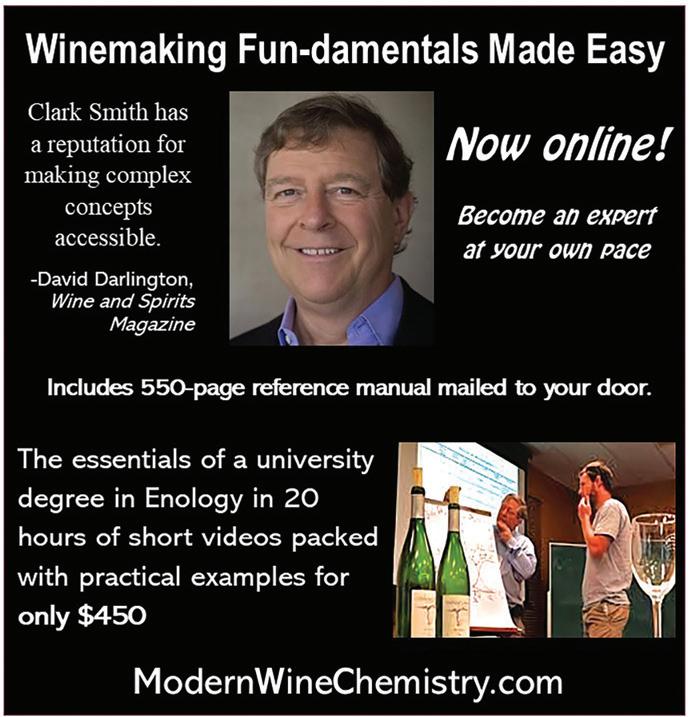
 by Dwayne Bershaw
by Dwayne Bershaw
hemical and microbial stability are a group of activities that occur after fermentation but prior to bottling that are critical to quality wine production. Once primary and malolactic fermentation are completed, chemical and microbial stability are the main concerns of the winemaker prior to final clarification, filtration, and packaging.
When “stability” is discussed in a wine, microbial stability is one part of this, while heat and cold stability (or protein and potassium bitartrate stability) is a different procedure that will be discussed in a future article. Heat and cold stability are most critical for white and rosé wines. Microbial stability, on the other hand, is a universal concern for all wine styles. In this article we’ll discuss the most common methods for achieving microbial stability, both during aging in the cellar and when packaging.
Microbial stability involves protecting the wine from microbial contamination and subsequent off aroma generation caused by microbial metabolism. Without human intervention the natural next step for wine is to be converted to vinegar by acetic acid bacteria. These bacteria require oxygen for metabolism, and chemical oxidation also negatively changes the aroma of wine, so step one in microbial stability is protecting the wine from oxygen. Wine storage vessels must be filled to the top or purged frequently with inert gas to prevent oxidation, and wine processing steps should be undertaken in a way that minimizes oxygen pickup as much as possible.

Unfortunately, acetic acid bacteria are not the only microbes we must be concerned about during the aging process between fermentation and bottling, so step two in microbial control usually involves the judicious and repeated use of potassium metabisulfite, or SO2. SO2 acts as both an antioxidant and antimicrobial agent, and this dual impact is why it is so difficult to make high-quality wine without the use of sulfites.
Before we discuss SO2 use in aging wines, a brief word about timing. Some winemakers like to utilize an SO2 addition at the crush pad, especially if the fruit has been damaged prior to harvest. The thinking here is that SO2 will inhibit native microbes on the fruit until Saccharomyces yeast are added and outcompete other microbes. Addition rates tend to be in the 25–100 ppm range, with dosage increasing with increasing fruit damage. All of the SO2 added at the crush pad for reds, or in the press pan for whites, will be bound and consumed relatively quickly, so this level of addition won’t inhibit Saccharomyces fermentation. It may, however, be inhibitory to malolactic fermentation since lactic acid bacteria are sensitive to both free and bound SO2. Therefore, SO2 use should be limited to 25 ppm or less prior to the completion of malolactic fermentation, if malolactic fermentation is desired. Finally, if possible, it’s important to check for both primary fermentation completion, and malolactic fermentation completion if desired, prior to the addition of more SO2. Wines with residual sugar and malic acid may be susceptible to further microbial metabolism and spoilage during aging, so understanding if these fermentation processes are complete is a very helpful tool in quality winemaking.
When SO2 is added to wine some of it is becomes bound to other molecules in the wine (acetaldehyde, anthocyanins, and sugar are common examples) and is thus unavailable to contribute to antimicrobial and antioxidation reactions. The remaining free SO2 dissociates into several forms when added to wine. The percentage of free SO2 in each form depends on the pH of the solution. The
active form of free SO2 in terms of antimicrobial action is called molecular SO2. The percentage of free SO2 in the molecular form is much higher at pH 3.0 than at pH 4.0, thus to protect wine from microbial spoilage the level of free SO2 needed is lower at low pH, but very high at high pH.

One could write an entire article on SO2 use in wine (and, in fact, they have as there are already several good ones for further reference at winemakermag.com to review), so to keep this article to a manageable length we’ll cut right to the actionable information. Figure 1, below, displays a chart of the free SO2 level required at a particular pH to keep the molecular SO2 level between 0.5 and 0.8 ppm molecular SO2. During aging most winemakers try to keep the free SO2 level of their wines somewhere between the two curves to limit microbial metabolism in the wine.
At the levels we utilize SO2 in wine production it does not outright kill microbes, but inhibits their metabolism so that they cannot utilize other components in wine as an energy source. This is an important concept to understand because it means that if the SO2 level in wine drops below a certain threshold then some microbes, usually SO2-tolerant and ethanol-tolerant yeast strains, may become capable of metabolism and
growth. One of the first commercial wines I produced was a rosé with about 1.5% residual sugar. My attempt at sanitizing the bottling line with iodine was inadequate, probably due to improper concentration or contact time, and even though the wine was stable for several months due to my SO2 addition prior to bottling, it inevitably ended up refermenting. The free SO2 level in the wine declined over time due to slow oxidation in bottle, and the carbon dioxide created by yeast metabolism was enough to push the corks out of the bottle. We had to recall the remaining bottles and reimburse several loyal customers who had sustained cleaning expenses from wine leakage.
My refermentation nightmare in the previous paragraph leads us to some general rules regarding microbial stability. If a wine contains appreciable amounts of sugar (greater than 3 g/L or 0.3%), and in some cases malic acid (greater than 0.3 g/L), then microbes must be eliminated in bottle or the wine will at some point become unstable. Conversely wines that are fermented dry and have gone through malolactic fermentation are usually safe to bottle without sterile filtration or the addition of chemical inhibitors. There are a few qualifiers in the previous sentences so let’s discuss some examples for specific wine styles.
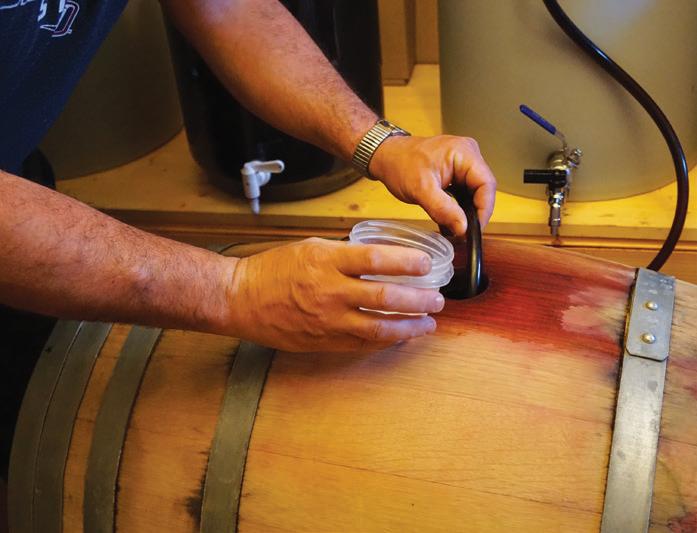
White and rosé wines most often have not completed malolactic fermentation and the wines may contain some residual sugar to balance the acidity. It’s worth noting that winemakers may have difficulty determining whether residual sugar is present in any wine style, white or red, because it is impossible to determine the residual sugar level by measuring °Brix or specific gravity alone. While a stable °Brix measurement over several days at a level somewhere around -1 °Brix is an indicator of fermentation completion, it may also mean that the fermentation has stalled at a low residual sugar level. The only way to know for certain is to measure the sugar content. The sugar pill test (e.g., Clinitest®) is one method accessible to home winemakers. This test works by the action of sugar molecules reducing iron ions in the pill to create a color change. In my experience the test is reasonably accurate but does sometimes indicate small amounts of residual sugar when there is actually none, because some wines contain small quantities of reducing agents other than sugar.
For malic acid in wine, as mentioned previously, lactic acid bacteria are inhibited by higher levels of free and total SO2. So for standard wines at greater than 10% ABV, if total SO2 levels are greater than 50 ppm then lactic acid bacteria should be inhibited and are thus not a big concern.
Sterile filtration is a common commercial method of eliminating microbes in bottled wines that contain residual sugar, where the filter media is small enough and uniform enough that none of the yeast or bacteria that could cause problems in finished wine are allowed to pass through the filter. A 0.45 μm membrane cartridge filter and filter housing are required. Nominally rated “sterile” pad filters made of cellulose are not designed to completely guarantee removal of all microbes, thus sterile pads in a plate-and-frame filter are a good final pre-filtration option, but are not
an equivalent alternative option for a sterile membrane cartridge filter.
Sterile-filtered wines must be pre-filtered prior to passing through the sterile membrane or the filter will quickly clog. In addition the filter and all piping to the bottle must be sterilized prior to bottling. Commercial winemakers use 180 °F (82 °C) water, steam, or ozone to sterilize their bottling lines, options not available to most home winemakers. Since home wine bottling is done on a small scale, it is possible to sanitize bottling equipment with iodine, 70% ethanol, or an acid-based sanitizer such as Star San. When using these chemical sanitizers one must follow the dilution ratio and contact time (usually a minute or two) recommendations from the manufacturer for the sanitizer to be effective. It’s also important to note when sanitizing that the bottling equipment must be free of soils (i.e., clean, with any solids and biofilms removed) prior to sanitizing in order for the sanitizer to be effective.
Potassium sorbate is a chemical inhibition option for home winemakers, and is sometimes used commercially in sweet wine production. Sorbic acid is actually the inhibitory compound,
but potassium sorbate is more soluble than sorbic acid, thus the sorbate salt is added and the sorbate ion dissociates from the potassium ion once added to the wine. Sorbate is usually added at 100–200 mg/L sorbic acid, depending on the alcohol content (more is needed for lower alcohol levels). Potassium sorbate is about 75% sorbate by weight, so this should be taken into account when calculating the addition rate. Sorbate inhibits yeast metabolism only, so SO2 is still required for bacterial inhibition. In addition, lactic acid bacteria commonly employed for malolactic fermentation can metabolize sorbic acid to produce a fault known as geranium taint, because the aroma is reminiscent of geranium leaves, so SO2 must be utilized to prevent bacterial metabolism when sorbic acid is used. There is some research suggesting that sorbic acid is converted to ethyl sorbate over time, which has been described as having both vegetal and tropical fruit aromas. Perhaps this is why commercial producers only use sorbate on very aromatic dessert wines.
Commercial winemakers also have the option of adding a chemical compound called dimethyl dicarbonate (DMDC). DMDC is effective against
both yeasts and bacteria, although it is less effective against high levels of bacterial contamination so use of SO2 is still recommended. DMDC is unstable in wine and several hours after bottling it breaks down into harmless levels of CO2 and methanol. Unfortunately, DMDC is also extremely toxic to humans and thus requires an expensive dosing system for safe integration into a bottling line, which puts this chemical inhibition method out of reach for home wine producers.
For most red wines, where the wine has been fermented to dryness and malolactic fermentation has been completed, it is usually possible to bottle microbially-stable wines without sterile filtration or chemical inhibition. The exception is wines containing the yeast Brettanomyces, colloquially referred to as Brett. Brett can continue to metabolize and grow, even in dry wines without residual sugar or malic acid. There is some research suggesting that Brett can metabolize odd-ball sugars that other yeast do not utilize (like pentoses) or that Brett may metabolize ethanol itself. When Brett grows it creates a host of volatile organic chemicals that
create a range of aromas, from BandAid or hospital sanitizer, to barbecue, to sweaty horse aromas. But Brett also tends to be a slow grower in bottled wines, perhaps due to the lack of energy sources. This can lead to significant bottle-to-bottle variation; where some bottles smell like the original wine but others smell significantly of Brett metabolites. Some people enjoy the aromas produced by Brett, it can be found in both cheap and expensive wines, as well as some styles of beer and cider. Others find the aromas off-putting and commercial winemakers in the U.S. often think of wines containing Brett to be flawed. My opinion is that a little Brett aroma is acceptable, depending on style and the other components in the wine, but when Brett aromas overpower all other wine aromatics it makes a wine one-dimensional.
If red wines have residual sugar or malic acid the same rules apply as those for white and rosé wines: Moderate amounts of SO2 must be added to inhibit lactic acid bacteria and the wine should be sterile filtered or chemically inhibited if residual sugar remains. One final exception to these rules might be fortified dessert style wines. If the alcohol content has been raised above 18% ABV by
addition of grape brandy or other fortifier then it is unnecessary to be concerned about further microbial metabolism, no matter the residual sugar level. The microbial stability afforded by fortification is a big benefit for this wine style if sweet wines are your preferred tipple.
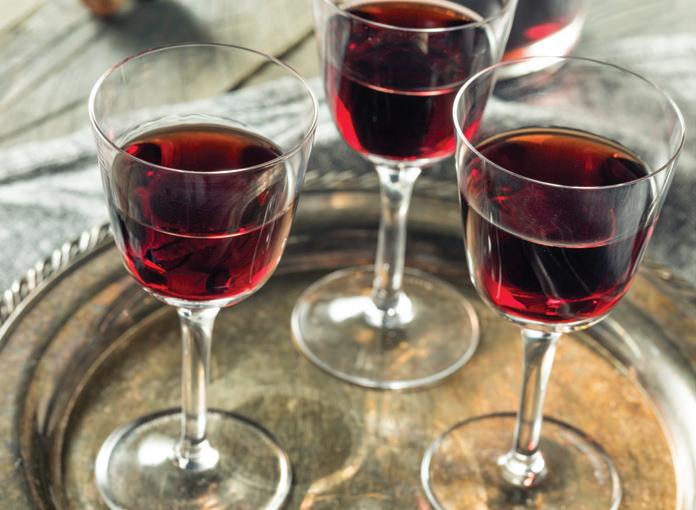
While we didn’t spend much time discussing it, it’s important to remember that oxidation and microbial spoilage can happen independently, but most often happen in tandem since high oxygen levels quickly deplete any free SO2 in the wine. Spoiled wines with high levels of acetic acid are by definition oxidized, and besides the aromas of vinegar and nail polish remover they also lose their fruity aroma and their color shifts toward brick red or brown. However, I’ve also made and tasted wines that have been protected from microbial spoilage by SO2 use, but nonetheless have the oxidized aroma of over-ripe apple and have lost their fruity aromatics due to poor storage conditions where chemical oxidation occurred.
The natural wine movement has been increasing in popularity and is focused on both the limitation of additives as well as the low or no use of SO2. It’s certainly possible to make wines without SO2, but in my opinion very clean cellar practices and a somewhat religious zeal for limiting oxygen pickup are required to achieve quality results. Natural winemaking is also most successful in red or fortified wine production where higher alcohol levels and tannins in the wine can act as the antimicrobial and antioxidative agents. Wines with low or no SO2 use are also usually aged for a shorter period of time prior to bottling and are best enjoyed young.
Developing a game plan for maintaining microbial stability prior to harvest can be helpful, since activities can become hectic once production activities get underway. Things to consider when coming up with a plan are: Fruit quality, wine style, SO2 usage concerns, malolactic fermentation completion, aging plan, and packaging ability.
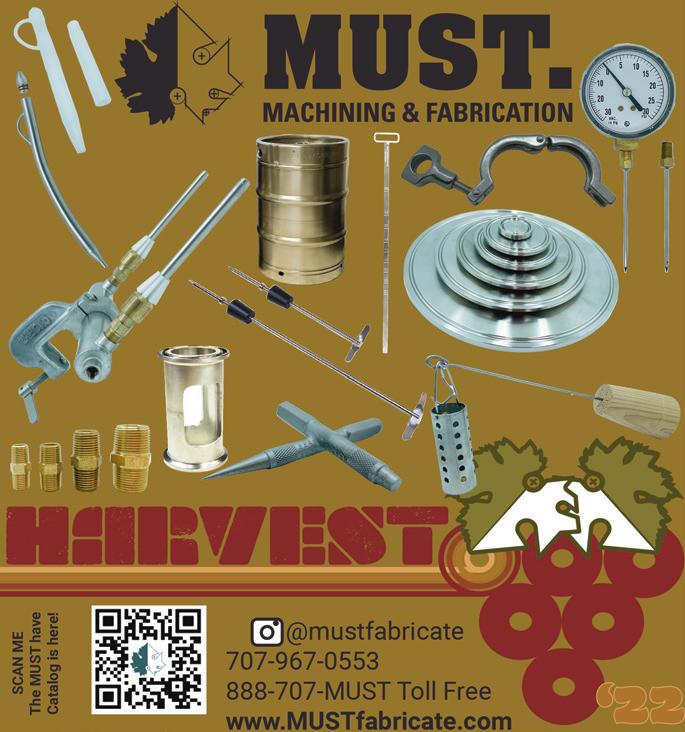





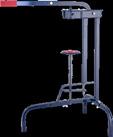
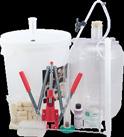






Store Location: 575 3rd St. Building. A, Napa CA 94559 - Inside the Napa Expo Fairgrounds www.NapaFermentation.com
“This book contains techniques and methods for the home winemaker but would also be helpful to winemakers of any experience level from beginner to advanced commercial winemakers. It is thorough, complete, incredibly well researched, and contains the latest research on wine testing and analytical methods…this book leaves nothing out.”
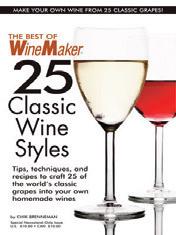
– drew horton , Enology Specialist, University of Minnesota Grape Breeding & Enology Project
6x9” | illustrated | 614 pages
ISBN: 978-1-55065-563-6 $24.95 (trade paper)
ISBN: 978-1-55065-593-3 $59.95 (cloth)
Distributed by Independent Publishers Group


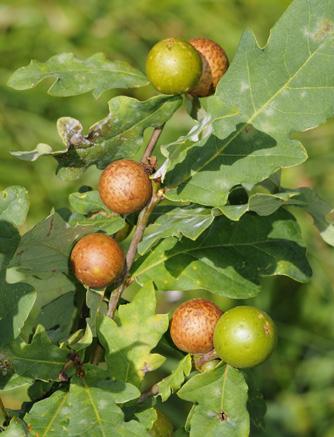
In my June-July 2022 column on using oak alternatives, I mentioned tannin contributions among the benefits of winemaking with oak. In this column, we will both add and subtract tannins. Tannin-rich materials were originally used in tanning hides; turning animal skins into leather. In wine, tannins bind with the proteins of your palate. Since that does not sound pleasant, why do we want tannins in our wine? They are often bitter and thus provide a balancing effect against the sweetness of fruit, sugar, or alcohol. Tannins can provide structure to avoid an overly soft impression on the palate. They stabilize color in red wines and provide antioxidant benefits in all wines.
Wine tannins come primarily from grapes and oak. When tannin extraction goes right, you have a balanced wine. If it goes wrong, you can have too little tannin or too much tannin. Low tannins manifest as soft and flabby with reduced color intensity in a red wine. If you get too much tannin in your wine, it can become harsh on your palate and astringent.
To increase tannins, you may start in the vineyard. Better sun exposure and a lower crop yield can improve the production of skin tannins. Once you have grapes, if the stems are well lignified (brown and woody), consider adding some back after crushing and destemming. You would typically return about 10% of the separated stems. If the stems are green, do not add any back. You can also try cold soaking your must to extract more tannins. Gas the fermenter headspace with inert gas, and keep the tempera-
ture below 55 °F (13 °C). You may be able to safely hold the must for two or three days before you allow the temperature to rise and begin your fermentation. After fermentation, you may be able to hold the must under similar protected conditions for extended maceration. Some winemakers find that such maceration styles extract more tannins.
Among grape tannins, those from the skins are favored. Crushing and maceration bring broken skins into contact with the juice. Seed tannins are harsher and you should avoid breaking seeds. If your red wines are coming out too tannic, consider removing seeds during fermentation. One way to do that is the process of delestage or rack-and-return. Drain the fermenting wine through a strainer, catching the seeds. Then pump or pour the wine back over the cap, discarding the seeds. Stem tannins are usually eliminated before beginning maceration. Or you can add a commercial grape-tannin product.
Barrels are the most traditional way to add oak tannins. Staves, sticks, cubes, and beans of toasted oak may also be added during wine aging. Oak sawdust can be added to a primary fermentation to provide “sacrificial tannins” that help stabilize wine color. Prepared tannin products serve similar purposes. For my red wines, I like to add Scott’Tan FT Rouge Soft. Other products include EnartisTan V and Tannin VR Supra. White wine tannin products, intended to help protect against oxidation and improve mouthfeel, are sometimes made from oak gall nuts. I use FT Blanc Soft and Enartis offers EnartisTan Blanc.
After fermentation, a wine can be augmented with other prepared

Tannins can provide structure to avoid an overly soft impression on the palate.Tannin products made from oak gall nuts are one way to add mouthfeel to a white wine. Photo courtesy of Shutterstock
products. Besides oak, chestnut wood and exotic woods are used. For white wine, there are citrus wood tannin products. Visit the manufacturers’ websites to learn more about the various products. Once you have a product, do trials at a mid-range dose before treating your wine. Weeks of aging may be required to completely integrate a product in your wine, but you can usually make a sound judgment based on an overnight trial. If you like what a product does for your wine, you can move on to adding it or do another trial to set the dose.
What if your wine is too harsh, bitter, or leaves a rough astringency on your palate? Often very young vines produce grapes without enough fruity character, leaving the tannins out of balance. Even in a mature vineyard, overcropping may cause excessive tannic character in the wine. Some varieties are inclined toward very tannic wines, even when fully ripened. These include Tannat, Petite Sirah, Cabernet Sauvignon, and others.
The same steps described earlier to increase tannins can overdo it in some cases. A very long cold soak, too many stems added back, or excessive extended maceration on the seeds may cause a tannin overload. Adding too much tannin product can leave you with a problem.

There are three ways to reduce tannins in astringent wine. These are bulk aging, bottle aging, and protein fining.
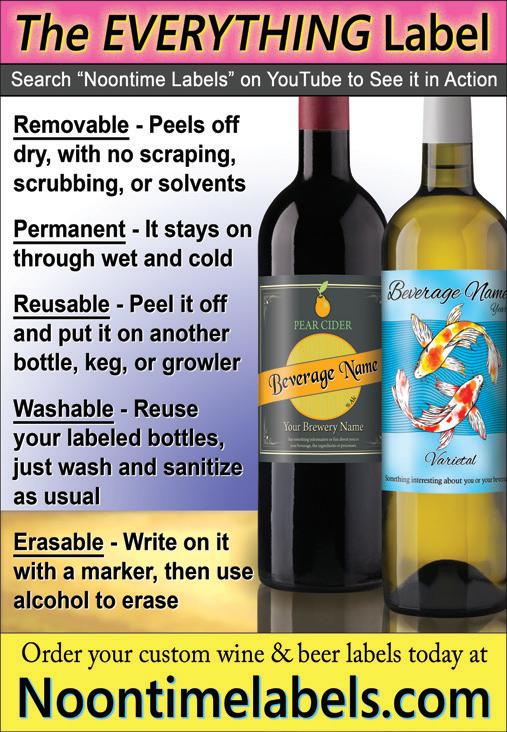
Bulk aging in barrels is traditional for red wines around the world. A barrel can allow slow and gentle oxidation reactions to occur in aging wine. Tannins polymerize into longer chain molecules that have a softer impact and may drop out entirely. Tanks and carboys may not have the benefits of oxygen addition, but they can allow the polymerization of tannins. Wine will also continue to mellow in bottle. While you may like such a wine better after two, five, or even ten years in the bottle, it may come with a side effect: Precipitation of tannin residue in the glass.
Protein fining is the active way to remove tannins from a wine. Protein additions bind with tannin molecules, precipitate out, and are left behind when you rack off. The intended result is a softer profile, reduced astringency, and a rounder effect on the palate. The primary goal is tannin removal, but some of the proteins react with oxidized wine components and may freshen the overall profile as well. These fining agents are not intended to improve clarity, although that may occur.
There is some risk of “overfining” with proteins. That manifests two ways: Either so much tannin is removed that you now need a tannin addition, or there may be excess protein left in the wine leading to haze and cloudiness later on. The traditional protein fining agents are all of animal origin. Although there should be very little fining agent left in the wine, people on a vegetarian or vegan diet may prefer to avoid these products. More recently manufac-
turers have introduced some vegetable protein finings.
The four common animal-derived fining agents are egg white, casein, isinglass, and gelatin. Egg whites are just what you think, the whites of chicken’s eggs separated from the yolks. Casein is the protein found in milk. Isinglass is a protein product derived from the swim bladders of fish, traditionally sturgeon but other species are also used. Gelatin is from the same origin as the gelatin used in making desserts. It is produced from animal bones, hides, and tendons—usually from pigs. For using any of these, do a trial first.
To fine with egg whites, separate yolks from whites and reserve the yolks for another purpose. Egg whites can be added directly to barrels, although more often they are lightly beaten with a little water and wine. Add a pinch of potassium chloride and avoid beating so stiff that they float on the wine.
To treat a 5-gal. (19-L) batch, separate one fresh egg and take half of the white. Beat that lightly with a pinch of potassium chloride, a little wine, and a little water. Stir into the wine. Let the wine stand until clarity returns, usually just a few days. Rack off of the tannin and egg white sediment.
Casein may be applied in several different ways. If you start with powdered casein, you will need to start by rehydrating it under alkaline conditions. Easier is to use potassium caseinate, which readily dissolves in water. You can use nonfat milk or whole milk directly. Since casein removes some browning along with tannins, it can improve the color of brownish white wines. It softens the tannins of red wines, but not as aggressively as gelatin. Nonfat milk has an advantage over potassium caseinate in that it adds a small amount of lactose to the wine, so you get a slight sweetening effect that may offset some of the bitterness you are trying to correct.
Whole milk offers the same sweetness, and its fat may absorb some other off-aroma compounds like TCA (cork taint) or even smoke taint from wildfire smoke exposure. Take care if you use whole milk to rack within just a few days and separate the wine from both the sediment and the floating milk fat.
For packaged casein products, follow package instructions. To use milk, add up to 250 mL directly to 5 gal. (19 L). Note that for commercial U.S. wines TTB (the Tax and Trade Bureau) limits milk additions to 0.2% of volume, or 40 mL in 5 gal. (19 L). In home winemaking, higher doses may be beneficial and dilution of the wine is not a market
concern. Rack in about four days from any casein fining. If a haze remains, you may need to counter-fine with bentonite or tannins.
Isinglass is less effective against astringent tannins than the other proteins and has less tendency to over fine. However, it does have bulky lees leading to potential loss of wine volume. If not very fresh, it can also develop fishy odors. Follow package directions — sometimes an acid addition or soaking may be required. For 5 gal. (19 L), a typical approach is to add one Tbsp. (15 mL) of granules to two cups (500 mL) of water with ½ tsp. (2.5 mL) of citric acid. Let stand 30 minutes then stir into wine. Let settle for two or three days and rack off.
Gelatin is the strongest of the protein fining agents so use it if you have a very tannic wine you are trying to tame. Gelling strength is reported in Bloom units. Enological gelatin is about 80 to 150 Bloom, while dessert gelatin is about 175 to 275 Bloom. Gelatin is so strong that it may strip the wine of desirable characteristics. It may also require counter-fining with tannin to restore balance. To treat 5 gal. (19 L), dissolve ¼ ounce (7 g) in 10 oz. (300 mL) of hot water. Let stand 10 minutes and stir into wine. Rack when clarity returns.
While some vegetarians may be comfortable with casein or egg whites, vegans probably will not want to use any of the traditional proteins. For them, or anyone else who is curious about it, I recommend trying one of the new pea-protein products. One example is Enartis Plantis AF and others are coming to market to meet this emerging demand. The products are entirely free of animal materials, they remove tannins, and may aid clarity.
To treat 5 gal. (19 L) with Plantis AF, suspend two to six grams in ten times as much water. Stir the suspension into the wine or mix while racking. Let settle and rack. Treat with bentonite if complete clarity is not restored.
So now you can go up or down with your tannins. Rely on your taste and the advice of trusted helpers to decide if you need to make a change in the wine’s tannin profile. Select possible products to add or subtract and run trials before treating a whole batch of wine. Upon choosing a material and a dose, then you can make the addition to the whole batch. But remember, time can also be used to treat a wine that has excess tannins. Patience in this sense can be a great virtue. Enjoy your improved wine!
Rely on your taste and the advice of trusted helpers to decide if you need to make a change in the wine’s tannin profile.
In the June-July 2022 issue, I discussed where to start when you finally have decided you are determined to create your own backyard vineyard. It covered the concepts of site planning and some of the required prep work such as soil amendments. For the purpose of these articles I am considering a small-scale or backyard vineyard to be at least a dozen vines, and an acre or less. In general, a vineyard of this size would:
• Be small enough that one adult (two at most) will be able to farm and harvest the vineyard without a lot of outside help.
• Enable those who plan, plant, farm, and harvest to understand winemaking from the most important possible perspective: How to improve wine from ground to glass. Farming your own grapes opens up whole new avenues of understanding the viticulture and enology processes.
• Produce no less than 5 gallons (19 L) of wine (12–20 highly productive vines) and as many as a few 55-gallon (225-L) barrels. Since vine yield is highly variable I would try to plant at least 20–40 vines to make sure you can fill and top a 5-gallon (19-L) carboy.
There is no doubt that you need to visit some local vineyards before deciding on a trellising system. Choosing trellising is a complicated process and one that cannot be explained in a few short paragraphs. If I learned anything at UC-Davis, it’s that viticulture is site specific in the extreme. That means what works here in Lompoc, California will likely not be an efficient trellising system in Virginia. First we need to understand how to
decide on row and vine spacing, then we can come back and discuss trellising options a bit.

Viticulturists often express vine spacing with two measurements, such as “twelve-by-six,” “eight-by-four,” or “threeby-three.” The first number represents the space between rows. This means that there might be twelve feet (3.7 m) in between the end-posts. This first measurement dictates what kind of equipment is appropriate for the vineyard. 12-ft. (3.7-m) row spacing will allow almost any kind of tractor, full-sized pickup truck, etc., to traverse the rows. 6- to 8-ft. (1.8- to 2.4-m) row spacing is generally the tightest that allows narrow tractors to work in the vineyard.
One might be able to squeeze an ATV down 4-ft. (1.2-m) rows, but take the rows to 3 ft. (1 m) and get prepared to do all cultural practices (weed control, spraying, fertilization, compost application, leaf removal, shoot positioning, harvest, etc.) by hand or with prohibitively expensive “over the row” French tractors that can actually straddle tight rows, with the operator riding in a compartment above the vines.
The second number expressed (e.g., eight-by-four) represents the distance between vine trunks within a row. This number (along with row spacing) will dictate vine density per acre, will impact both yield-per-plant and yieldper-acre, and will also impact how the vines compete with each other for available water and nutrients.
Vineyard spacing is a hot topic in wine-farming circles. The debate has become a high-interest issue with home viticulturists around the globe. There was a time when anything tighter than 12 ft. (3.7 m) between rows and 6 ft. (1.8
BY WES HAGENChoosing trellising is a complicated process and one that cannot be explained in a few short paragraphs.Photo courtesy of Wes Hagen When planting dormant grapevines, it’s imperative that the graft union is roughly a fist’s height above soil level.
m) between plants was considered a high-density planting. Indeed, many of the greatest vineyards in Napa Valley are still planted on this kind of “wide” spacing. But in the last two decades, and the last 5–10 years specifically, high-density plantings (spacing as close as 3 ft. x 3 ft. or 1 m x 1 m) have become widespread, extreme examples of land-use efficiency. Even though squeezing thousands of vines into a one-acre planting seems a perfect strategy for a backyard vineyardist, there is plenty of evidence that high-density vineyards can be extremely problematic on most soil types.
So how does an amateur viticulturist best match a potential home vineyard site to a specific spacing arrangement? The answer is not necessarily complicated, but does require a good deal of thought, practice, and planning. Let’s get down to the nuts and bolts of how to decide on spacing, and how that decision will impact fruit quality, canopy density, and labor issues. First let’s look at how vine spacing effects vineyard issues and wine quality, and then we’ll answer some questions to help you decide what spacing would be well suited to your backyard or small vineyard planting.

If you remember anything from this article, remember this: Vineyards should be efficient to farm and vine spacing should be based on the anticipated vigor of the vineyard. What does this mean to you? The amount of work you will have to put into your vineyard is dictated by how well you match vine vigor (as expressed by soil fertility and climate) to a trellising and spacing arrangement that perfectly harnesses that vigor into an appropriate “system.”
Let me give you an example. I have a professional acquaintance that asked me to consult on a vineyard project gone wrong. This was the worst kind of consulting job — one where the decisions had all been made and implemented in a completely incorrect fashion. The vineyard owner had gone to Burgundy, France and saw beautiful, stunted little Pinot Noir vines all arranged in meter-by-meter (3 ft.-by-3 ft.) fashion and decided that he wanted the same type of vineyard on a small one-acre slope at his home in the Santa Ynez Valley in California. Mistake number one: Don’t let aesthetics drive a planting project, and never base your vineyard design on the vigor and climate of a site 6,000 miles (10,000 km) away.
The soil of the Santa Ynez site was highly vigorous, nutrient-rich, and deep. The vines sprawled out with canes eight feet (2.4 m) and longer, and the more the owner tried to hedge the vines, the more lateral shoots appeared and clogged up the fruiting zone. Those beautiful 3-ft. (1-m) rows became an impenetrable jungle of shoots and foliage — you couldn’t work the vines without a machete and you might imagine how difficult it was to get sun exposure on the fruit, let alone find the clusters when harvest time arrived. This vineyardist assumed that high-density planting reduces vigor significantly. Competition does exist between vines, but not at a rate that will turn a high-vigor site into an appropriate location for a three-by-three or meter-by-meter system.
Bottom line — high-density planting is only appropriate
are some basic visualizations of the most common types of trellises and their pruning style.Image courtesy of UC-ANR, from Grape Pest Management A head-trained vine with spur pruning A head-trained vine with cane pruning Bi-lateral cordon training with spur pruning Quadra-lateral cordon training with spur pruning Spurs Arms Arms Cordon Trunk Trunk Canes Head
on low to medium-low vigor sites where shoots rarely grow more than 4–6 ft. (1.2–1.8 m) per season. Sites that are appropriate for low-vigor trellising, such as a system that uses vertical shoot positioning (VSP) wires to direct all growth up and out of the way of the fruiting zone, are usually appropriate for high-density planting. Medium- to high-vigor vineyard sites are much more efficient to farm with at least 8 ft. (2.4 m) between rows (to allow a few feet for shoots sprawling and draping), and 6 ft. (1.8 m) in between plants, in order to give each vine ample space to spread its foliage and ripen a crop load.
So let’s look at some specific considerations for determining an appropriate vine-row spacing arrangement for a small vineyard.
Choosing the right grape variety for your small-scale vineyard is crucial. Try to get as much data as you can on local, successful wine grape vineyards. Find out what they are growing with success that will make a style of wine you enjoy and would like to emulate. Some grape varieties are more vigorous than others. Pinot Noir is generally less vigorous than Syrah or Grenache, so Pinot Noir is generally a better candidate for high-density planting, and Rhône varietals are better suited on a wide-spacing arrangement, unless the site is extremely low-vigor. More than nine out of ten successful high-density plantings I’ve visited have been Pinot Noir.
Read up about the grape you want to grow and try to decide if it will be low-, medium-, or high-vigor in your soil/location. This will be the number one consideration for trellising and pruning style. Low-vigor is best for head-trained vines, low- and medium-vigor for VSP trellis, and lyre or quadrilateral trellis styles for high-vigor.
It’s a great idea to check with your grapevine nursery to see if they have rootstocks that can moderate (or increase) vigor to a level that will allow you to tweak your vine spacing to a specification that pleases you. Don’t expect miracles with rootstock though — they won’t guarantee to lower or raise vigor — they have a small, but measurable effect on vine growth.
There are high-, medium-, and low-vigor rootstocks and choosing the right combination can save you lots of hedging (overly vigorous) or fertilizing (low-vigor) later on. Careful research and pestering vine-growing neighbors about their spacing and rootstock combinations will likely steer you in the right direction. Rootstock will also help protect your vines against soil-borne pests such as phylloxera and nematodes — so knowing if you have these pests will certainly influence your decision on which rootstock to choose or whether you can plant own-rooted grapevines.
Low-vigor sites that are appropriate for VSP systems (which are basically a series of staggered horizontal wires in which the growing shoots are tucked into to direct all the growth up into a curtain of vertical foliage) are usually more adaptable
for higher-density grapevines plantings. Head-trained vines, which means each year the vines will be pruned back to a woody head, require even spacing that allows them to spread their shoots, and not be crowded by their vine neighbors. Simple backyard trellising made of posts and wire should allow as much space between the rows as the height measurement of an average vine in full growth. For example, if your vines grow up to eight-feet (2.4-m) high they should have at least eight feet (2.4 m) between the rows to keep shading at a minimum. If you use fancy quadrilateral or split-canopy trellising (vines that have two cordons, and thereby grow two fruiting areas on two separate wires, spread horizontally), the rows have to give the vines ample room to grow and spread shoots to either side of the canopy. It should also be noted here that the closer the in-row vine spacing becomes, the less wood, or buds, should be retained at pruning for producing crop the following year. The main concern for the development of any vineyard should be designing a system that keeps canopy density at an optimal balance so there’s ample sun exposure on the fruit and in the “renewal zone” (the area where buds determine the following year’s crop as a function of sun accumulation).
Why do we care that fruit is not shaded? Not only does shaded fruit have more problems with disease, mildew, and rot but it also accumulates less sugar, has higher pH, higher malic acid, less color and phenolic compounds, and shows increased vegetal/herbaceous character. That’s a pretty good list of things to avoid, so choosing an appropriate spacing for our vineyard can do wonders for potential fruit and wine quality. Keep this in mind as we progress in our study of vine spacing: The main concern in developing vineyard spacing is to keep the fruit zone open to sun and air, eliminating cluster-shading leaves, lateral shoots, and over-cropped clusters that are all jumbled together. High-end winemakers often seek smaller vines with increased sun exposure on clusters, and the “mythology” of the high-density European vineyards makes this scenario even more attractive. Many winemakers admit that smaller vines with a light crop, in balance, produce high-quality wine and that high-density vineyard design, if used correctly, can increase vine competition to keep vine vigor somewhat in check.
Soil depth, water availability and fertility: I won’t get too technical here, but deep, fertile soils with high macronutrient (NPK) levels will usually translate into high-vigor vines that will require wider spacing (8 ft. x 6 ft./2.5 m x 1.8 m, at least). Low nitrogen levels in soil (soils that are rocky, shallow, have clay restrictive layers or are hillside oriented) may have less vigor and may be more appropriate for tighter spacing — between 8 ft. x 4 ft. (2.5 m x 1.2 m) and 3 ft. x 3 ft. (1 m x 1 m).
Remember that as planting density increases the competition between vines will result in some measurable reduction of vigor. In an extremely infertile site, high-density planting might not be appropriate either. You may want to give the vines a little ‘breathing room’, so they can spread out their root system without having to compete with their neighbors (8 ft. x 4 ft./2.5 m x 1.2 m seems appropriate to me for this type of situation). Competition between closely planted vines is mainly for water. Many viticulturists note that supplemental
irrigation is often required in high-density vineyards, especially near the end of the growing season when the soil is drying quickly and the vines are fighting it out for the tiny amount of water available beneath the ground. Remember that you can tweak the vigor of your site by judicious nitrogen applications to increase vigor or by applying less water in the early season to decrease vigor.
If your tractor is 6 ft. (1.8 m) wide, your rows should be at least 8–10 ft. (2.4–3 m) wide. If you have an ATV with a little sprayer on the back, it should be able to fit comfortably down the row without running over errant shoots. If you have no equipment, well . . . your options are unlimited and you may want to pack some extra vines in to increase your land-use efficiency.
First determine your potential vigor by either planting a few vines near your house or in a garden, then determine your optimal spacing. Finally take into consideration what type of equipment you have or wish to purchase to make the farming easier. Will you need to mow between rows? Can you use an ATV, wheelbarrow, or even a horse and cart to help collect the fruit during harvest? Can you use a neighbor’s tractor three times a year to till, spray, or harvest? Will you have to spray fungicide by hand? Is there enough room between rows to move comfortably and freely through the vineyard to work? These are questions that need to be answered before the vineyard is planted. Carefully working through these issues now will save you untold hours of toil trying to fix problems that should have been solved by vine row spacing design.
After your trellising and irrigation (covered in the June-July 2022 issue) are set up, tested, and functioning perfectly; you should be ready to plant some grapevines. Planting usually occurs in late spring after the threat of frost has passed. I suggest using dormant grapevines and not “green-growing” vines. My rates of success with dormant vines have proven significantly higher than using green-growing vines. If you receive your dormant vines from refrigerated storage, let them acclimate outside in the shade for about a week. Keep the vines moist and in the material (usually moist wood chips) until the morning of planting. At that time fill a 5-gal. (19-L) plastic bucket halfway with water, put the vines in roots first, and carry the vines 20–40 at a time into the vineyard for planting.
Dig a hole 18–20 in. (45–50 cm) deep in the soil. Do not compact the soil on the sides of the hole. I know of a few viticulturists that sprinkle broken shards of wine bottles in the hole before dropping the plant in, saying that the broken glass will keep gophers and burrowing pests from eating the roots. If you do this wear gloves and eyewear . . . and be careful. Some viticulturists also dip the roots in a solution of mycorrhizae fungus, which will increase the plant’s ability to uptake water and nutrients. Trim the root tips of the dormant vine and drop it in the hole, roots first. Make sure the graft union, which is the calloused bump where the rootstock meets the scion wood, is 4–6 in. (10–15 cm) above the final
soil level. If you bury the graft union, the ‘scion’ material (Pinot Noir clone 667, for example) will begin creating roots, and will take over the root system and make the rootstock useless. After the soil has been compacted and replaced (I use a sawedoff hoe to plant and use the blunt end to pack the dirt back in around the vine), you need to dig up some extra, fluffy soil to mound over the exposed part of the vine. Pile the soft soil 1–2 in. (2.5–5 cm) over the part of the dormant vine sticking out of the ground. When you see substantial growth peeking out of the soil mound (some weeks later), gently remove the soil mound and allow the vine to grow as usual. Remove all the shoots but the strongest, and gently tie the growing shoot to the training stake with ½-in. (12-mm) green vinyl “tie tape.” Go through the vineyard every week or two and add green vinyl ties every 4–6 in. (10–15 cm) of new growth.
If all went as planned, you should now have a thriving little vineyard in your backyard. The shoots are climbing a few inches a week, the green leaves are visible from your kitchen window, and in a few years, after you have produced vines with enough vigor to leave healthy, thick dormant wood on the trellis wires, you will start producing fruit.
Knowing how to train your new vines into the trellis/fruiting wires is complicated and requires some skill/practice to master. The following are your goals when training vines:
• Encourage a straight, robust trunk.
• That trunk should produce new canes at the head (top of the trunk) for cane-pruned systems (replace canes every year), or spur-trained systems where the canes are allowed to remain on the vines and produce “spurs” for fruit production.
• Allow the vine time and space to develop both above and below the soil. Many viticulturists would recommend pruning first year vines back to the way they looked when they were planted. This encourages root growth and a vine not being prematurely pushed into fruit production.
• Take 2-4 years (less time for more vigor) to develop the roots, trunk, head, and a vine with fruiting wood on a wire. Take it slow! A vine will produce fruit for an entire human generation, so let’s give them the chance to be healthy and happy.
Realize that this article is merely a guide and an introduction to the complex issues of establishing and maintaining a vineyard. The more you research each element I’ve outlined here, the more successful your vineyard establishment will be. Don’t forget to visit local vineyards and home growers, check the internet, join a few email groups or local clubs, and do everything possible to gather information and professional support before ordering your vines. Every hour of planning and study that goes into vineyard establishment will save 100 hours of hard labor in future seasons. The culture of the vine has been practiced and venerated for thousands of years. Your efforts and study will help preserve the tradition of growing grapes and making fine wine. When you have learned what it takes to grow good fruit in your neighborhood, make sure to share your expertise with other aspiring, local viticulturists. Share your wine and share your enthusiasm.
THE WINE SMITH
6800 A Moffett Rd. (US 98)
Mobile 36618
(251) 645-5554
e-mail: winesmith@bellsouth.net
www.thewinesmith.biz
Home Winemaking and Brewing Supplies.
THE BEVERAGE PEOPLE
1800 Empire Industrial Ct., Ste. A Santa Rosa 95403 (707) 544-2520
www.thebeveragepeople.com
Fast Shipping, Great Service, Cheesemaking & Brewing too.
BREHM VINEYARDS®
www.brehmvineyards.com
grapes@brehmvineyards.com
Phone: (510) 527.3675
Fresh grape pick-up in Petaluma, CA
Frozen grapes in Richmond, CA
Ultra-premium grapes for home winemakers for over 40 years! Sold at harvest or shipped frozen across N. America year-round. Over 30 varieties from Carneros, Napa, Sonoma, Washington and Oregon.
CURDS AND WINE, LLC
7194 Clairemont Mesa Blvd. San Diego 92111 (858) 384-6566
www.curdsandwine.com
Winemaking & cheesemaking supplies, make wine on site!
DELTA PACKING CO. OF LODI, INC.
6021 E. Kettleman Lane
Lodi 95240 (209) 334-1023
fax: (209) 334-0811
bcostamagna@deltapacking.com
www.grapesofgold.com
We offer premium California wine grapes & juice. Please call for a supplier near you.
MOREBEER! & MOREWINE!
995 Detroit Ave., Unit G Concord 94518 (925) 771-7107
fax: (925) 671-4978
srconcord@moreflavor.com
www.morewinemaking.com/ showrooms
Absolutely Everything! for Wine-Making
MOREBEER! & MOREWINE!
991 N. San Antonio Rd. Los Altos 94022 (650) 949-BREW (2739)
srlosaltos@moreflavor.com
www.morewinemaking.com/ showrooms
Absolutely Everything! for Wine-Making
MOREBEER! & MOREWINE!
1506 Columbia Ave. #12 Riverside 92507
(951) 779-9971
fax: (951) 779-9972
srriverside@moreflavor.com
www.morewinemaking.com/ showrooms
Absolutely Everything! for Wine-Making
MOREBEER! & MOREWINE!
2315 Verna Court San Leandro 94577 (510) 351-3517
srsanleandro@moreflavor.com
www.morewinemaking.com/
showrooms
Absolutely Everything! for Wine-Making
NORCAL BREWING SOLUTIONS
1768 Churn Creek Rd. Redding 96002 (530) 243-BEER (2337) or (530)-221-WINE (9463)
www.norcalbrewingsolutions.com
Full line of wine, beer, & distilling supplies, hardware, and ingredients. Manufacturers of lees filters, punchdown tools, and custom solutions.
VALLEYVINTNER, LLC
(925) 217-0058 or (866) 812 WINE (9463) Toll Free info@valleyvintner.com www.valleyvintner.com
75+ years wine making expertise! Owned & Operated by winemakers serving the winemaking community. “The Vine, The Time, The Wine”
THE BREW HUT
15120 East Hampden Ave. Aurora 80014 (303) 680-8898
www.thebrewhut.com
Complete Winexpert line! Fresh fruit, equipment & chemicals! We Rent Equipment Too!
LIL’ OLE’ WINEMAKER
516 Main Street Grand Junction 81501 (970) 242-3754
Serving Colorado & Utah winemakers since 1978
BREW & WINE HOBBY
Featuring Winexpert & RJ Spagnols kits. Area’s widest selection of wine kits, beer making supplies & equipment
12 Cedar St. East Hartford 06108 (860) 528-0592 or 1-800-352-4238
www.brew-wine.com
Specializing in world-wide juice varietals.
MUSTO WINE GRAPE CO., LLC
101 Reserve Road Hartford 06114
1-877-812-1137
sales@juicegrape.com
www.juicegrape.com
www.winemakinginstructions.com
MWG services home winemakers, wineries, breweries, cideries, distilleries, and homebrew shops. We provide access to the best grapes, juices, equipment, supplies, and knowledge available. Let us help you make your next wine your favorite wine.
NORTHEAST WINEMAKING
10 Robert Jackson Way Plainville 06062 (860) 793-2700
www.northeastwinemaking.com
New Year-Round Showroom Open in Plainville with 2nd full service location in Hartford, CT and satellite location in Chelsea, MA. Your one stop shop for fresh grapes, juice, equipment and accessories!
PARDO WINE GRAPES
3314 N. Perry Ave. Tampa 33603 (813) 340-3052
vince@pardowinegrapes.com
www.pardowinegrapes.com
Distributors of quality California (fall) and Chilean (spring) wine grapes and fresh juice to Florida winemakers for over 70 years.
CHICAGOLAND WINEMAKERS INC. 689 West North Ave. Elmhurst (630) 834-0507 info@chicagolandwinemakers.com www.chicagolandwinemakers.com
Complete line of home winemaking and brewing supplies & equipment since 1971.
GREAT FERMENTATIONS
INDIANAPOLIS
5127 East 65th St. Indianapolis 46220 (317) 257-WINE (9463) or toll-free 1-888-463-2739 info@greatfermentations.com www.greatfermentations.com
QUALITY WINE AND ALE SUPPLY/ HOMEBREWIT.COM
5127 E. 65th St. Indianapolis 46220 Phone: (574) 295-9975 customerservice@homebrewit.com

Online: www.Homebrewit.com
Quality wine making supplies for beginners AND experts. Bottles, Corks, Shrinks, Chemicals, and Professional Equipment. Largest selection of Winexpert Kits. Fast Shipping. Expert Advice.
BLUFF STREET BREW HAUS
372 Bluff Street
Dubuque (563) 582-5420
e-mail: jerry@bluffbrewhaus.com www.bluffbrewhaus.com
Complete line of wine & beermaking supplies. In operation since 2006.
BACCHUS & BARLEYCORN, LTD.
6633 Nieman Road
Shawnee 66203
(913) 962-2501
www.bacchus-barleycorn.com
Your one stop supply shop for home wine, cider, mead, beer and cheese makers for over 30 years.
HOMEBREW PRO SHOPPE, INC.
2061 E. Santa Fe
Olathe 66062
(913) 768-1090 or
1-866-296-2739 (BYO-BREW)
Secure ordering on line:
www.homebrewproshoppe.com
Complete line of wine & beer making supplies & equipment.
WINEMAKERS & BEERMAKERS SUPPLY
9475 Westport Rd. Louisville 40241
(502) 425-1692
www.winebeersupply.com
Impeccable line of wine & beer making supplies. Superior grade of juice from Winexpert. Quality malt from Briess & Muntons. Family owned store since 1972.
THE FLYING BARREL
1781 North Market St. Frederick
(301) 663-4491
fax: (301) 663-6195
www.flyingbarrel.com
Maryland’s 1st Wine-On-Premise & large selection of homewine supplies! Wine judge on staff!
MARYLAND HOMEBREW
6770 Oak Hall Lane, #108 Columbia 21045
1-888-BREWNOW
www.mdhb.com
We carry the VinoSuperiore frozen Italian must along with Winexpert Kits. Everything you need to make your own wine & cheese. Visit us in-person or online. We ship everywhere
BEER AND WINE HOBBY, INC.
85 Andover St. Danvers 01923
1-800-523-5423
e-mail: bwhinfo@beer-wine.com
website: www.beer-wine.com
Brew on YOUR Premise™
For the most discriminating wine & beer hobbyist.
THE WITCHES BREW INC.
12 Maple Ave. Foxborough 02035
(508) 543-0433
steve@thewitchesbrew.com
www.thewitchesbrew.com
You’ve Got the Notion, We’ve Got the Potion
MACOMB VINTNER SUPPLY
44443 Phoenix Dr. Sterling Heights (248) 495-0801
www.macombvintnersupply.com
Purveyor of grapes and grape juices for the winemaker. L’uva Bella, Mosto Bella & Chilean Bello Brands, and Extra-Virgin Olive Oil.
MID-MICHIGAN VINTNER SUPPLY
Grand Rapids & South Lyon (517) 898-3203
www.Mid-Michiganvintnersupply.com info@Mid-Michiganvintnersupply.com
Purveyor of fresh grape juices for the winemaker. L’uva Bella, Mosto Bella & Chilean Bello Brands.
MORGAN VINEYARD
15775 40th Avenue
Coopersville 49404 (616) 648-3025 morgangrapes@gmail.com
MorganVineyard.com
Supplier of high quality wine grapes conveniently located in West Michigan.
SICILIANO’S MARKET
2840 Lake Michigan Dr. N.W. Grand Rapids 49504 (616) 453-9674
fax: (616) 453-9687
e-mail: sici1@sbcglobal.net
www.sicilianosmkt.com
Largest Wine Making inventory in West Michigan. Now selling beer and winemaking supplies on-line.
TAYLOR RIDGE VINEYARDS
3843 105th Ave.
Allegan 49010 (269) 521-4047
bctaylor@btc-bci.com www.taylorridgevineyard.com
18 Varieties of Wine Grapes and Juices. Vinifera, New York State, Minnesota and French hybrids. Providing wine grapes and juices for over 30 years.
HOME BREWERY
1967 West Boat St.
Ozark
1-800-321-BREW (2739) brewery@homebrewery.com
www.homebrewery.com
Since 1984, providing excellent Service, Equipment and Ingredients. Beer, Wine, Mead, Soda and Cheese.
DOC’S HOMEBREW SUPPLIES
451 Court Street Binghamton 13904 (607) 722-2476
www.docsbrew.com
Full-service beer & wine making shop serving NY’s Southern Tier & PA’s Northern Tier since 1991. Extensive line of Winexpert kits, supplies and equipment.
FULKERSON WINERY & JUICE PLANT
5576 State Route 14
Dundee 14837 (607) 243-7883
fax: (607) 243-8337
www.fulkersonw inery.com
Fresh Finger Lakes grape juice available during harvest. Large selection of home winemaking supplies. Visit our website to browse and order supplies. Open year round 10-5, extended seasonal hours. Find us on Facebook and follow us on Twitter @fulkersonwinery.
MAIN STREET WINES & SUPPLIES
249 Main St. Arcade 14009 (585) 492-2739
fax: (585) 492-2777
mainstwines@yahoo.com
Plenty of wine kits available to make your own wine. Full line of winemaking supplies and accessories for your convenience. Tue-Fri 10-6; Sat 10-3 or by appt. Like us on Facebook.
NIAGARA TRADITION
HOMEBREWING SUPPLIES
1296 Sheridan Drive Buffalo 14217 (800) 283-4418 or (716) 877-8767
www.nthomebrew.com
We feature a complete line of supplies for making wine, beer, mead, cider and cheese.
PANTANO’S WINE GRAPES & HOMEBREW
249 Rte 32 S. New Paltz 12561 (845) 255-5201 or (845) 706-5152 (cell) pantanowineandbeer@yahoo.com
www.pantanosbeerwine.com
Find Us On Facebook. Your source for wine & beer making supplies and equipment. Grapes and Juice from California, Italy & Chile in season, wine kits and all juice pails (6 gal) year round. Classes available. We now carry Distilling Products and Stills.
PROSPERO EQUIPMENT CORP.
123 Castleton St. Pleasantville 10570 (914) 769-6252
fax: (914) 769-6786
info@prosperocorp.biz
www.prosperocorp.biz
The source to all your winemaking equipment.
TEN THOUSAND VINES WINERY
8 South Buffalo St. Hamburg 14075
(716) 646-9979
mike@TenThousandVines.com
www.TenThousandVines.com
Wine supplies, juice and advice.
WALKER’S WINE JUICE
2860 N.Y. Route 39 – Since 1955
Forestville
(716) 679-1292
www.walkerswinejuice.com
Over 50 varieties of “Hot-Pack”
Grape, Fruit and Berry Juice, Requiring No Refrigeration, shipped by UPS all year. Supplying over 800 wineries in 37 states!
ALTERNATIVE BEVERAGE (BELMONT)
1500 River D., Suite 104
Belmont 28012
Advice Line: (704) 825-8400
Order Line: 1-800-365-2739
www.ebrew.com
44 years serving all home winemakers & brewers’ needs! Come visit for a real Homebrew Super Store experience!
ALTERNATIVE BEVERAGE (CHARLOTTE)
3911 South Blvd.
Charlotte 28209
Advice Line: (704) 825-8400
Order Line: 1-800-365-2739
www.ebrew.com
44 years serving all home winemakers & brewers’ needs! Visit our stores to learn how we can help you make the best wine you can make.
ALTERNATIVE BEVERAGE (CORNELIUS)
19725 Oak St.
Cornelius 28031
Voice Line: (704) 527-2337
Fax Line: (704) 522-6427
www.ebrew.com
44 years serving all home winemakers & brewers’ needs! Visit our stores to learn how we can help you make the best wine you can make.
AMERICAN BREWMASTER
3021-5 Stony Brook Dr. Raleigh 27604 (919) 850-0095
Text: (984) 251-3030
www.americanbrewmaster.com
Wine Kits, Wine Ingredients and additives, corks and bottles since 1983! Wow. 1983!
ASHEVILLE BREWERS SUPPLY
712-B Merrimon Ave. Asheville 28804
(828) 358-3536
www.ashevillebrewers.com
Value. Quality. Service. Since 1994.
CAROLINA WINE SUPPLY
329 W. Maple St. Yadkinville 27055 (336) 677-6831
fax: (336) 677-1048
www.carolinawinesupply.com
Home Winemaking Supplies & Support.
THE GRAPE AND GRANARY
915 Home Ave. Akron 44310 (330) 633-7223

www.grapeandgranary.com
Concentrates, Fresh juice, Wine on Premise.
LABEL PEELERS BEER & WINE MAKING SUPPLIES, INC.
211 Cherry St. Kent 44240 (330) 678-6400
info@labelpeelers.com
www.labelpeelers.com
Specializing in winemaking/ homebrew supplies & equipment. Free monthly classes.
Hours: Mon-Sun 10am-7pm
HIGH GRAVITY 6808 S. Memorial Drive Tulsa 74133
(918) 461-2605
e-mail: store@highgravitybrew.com
www.highgravitybrew.com
Join our Frequent Fermenters Club!
F.H. STEINBART CO. 234 SE 12th Ave. Portland 97214 (503) 232-8793
fax: (503) 238-1649
e-mail: info@fhsteinbart.com
www.fhsteinbart.com
Brewing and Wine making supplies since 1918!
HOME FERMENTER
123 Monroe Street Eugene 97402 (541) 485-6238
www.homefermenter.com
Providing equipment, supplies and advice to winemakers and homebrewers for over 40 years.
BOOTLEGGERS BREW SHOP, LLC
917 Pleasant Valley Blvd. Altoona 16602
(814) 931-9962
http://bootleggersbrewshop.com
bootleggersbrewshop@gmail.com
Find us on Facebook! Central PA’s LARGEST homebrew supplies store! We carry seasonal cold pressed wine juices from around the world. Special orders welcome!
NITTANY VALLEY TRUE VALUE
1169 Nittany Valley Drive
Bellefonte
(814) 383-2809
fax: (814) 383-4884
Supplies - Equipment - Classes. Fresh grapes & juice in season.
PRESQUE ISLE WINE CELLARS
9440 W. Main Rd. (US Rte. 20) North East 16428 (800) 488-7492
www.piwine.com
Your one stop shop! Complete service since 1964, helping you make great wines. We specialize in small winery and amateur wine supplies and equipment. Check out our website www.piwine.com or stop by and see us. Fresh grapes and juice at harvest.
SCOTZIN BROTHERS
65 N. Fifth St.
Lemoyne 17043 (717) 737-0483 or 800-791-1464
www.scotzinbros.com
email: shop@scotzinbros.com
WINE and Beer MAKERS PARADISE!
BADER BEER & WINE SUPPLY
711 Grand Blvd.
Vancouver, WA 98661
1-800-596-3610
Sign up for our free e-newsletter @ Baderbrewing.com
THE BEER ESSENTIALS
2624 South 112th St. #E-1
Lakewood 98499 (253) 581-4288
www.thebeeressentials.com
Mail order and secure on-line ordering available.
BREHM VINEYARDS®
www.brehmvineyards.com grapes@brehmvineyards.com
Phone: (510) 527.3675
Fresh grape pick-up in Underwood, WA
Frozen grapes in Portland, OR
Ultra-premium grapes for home winemakers for over 40 years! Sold at harvest or shipped frozen across N. America year-round. Over 30 varieties from Carneros, Napa, Sonoma, Washington and Oregon.
JON’S HOMEBREW AND WINE SUPPLY
1430 E. Main Ave., #1430C
Puyallup 98372 (253) 286-7607
jon@jonshomebrew.com
jonshomebrew.com
Puyallup’s home for Home Beer and Winemaking supplies!
THE CELLAR BREW SHOP 465 N. Washburn St. Oshkosh 54904 (920) 517-1601
www.thecellarhomebrew.com
cellarbrewshop@outlook.com
Beer & Wine ingredients and equipment. Extensive inventory at Competitive prices, bulk discounts. Great service and free advice from experienced staff.
HOUSE OF HOMEBREW
410 Dousman St. Green Bay (920) 435-1007
staff@houseofhomebrew.com
www.houseofhomebrew.com
Beer, Wine, Cider, Mead, Soda, Coffee, Tea, Cheese Making.
WINE & HOP SHOP
1919 Monroe St. Madison 53711 (608) 257-0099

www.wineandhop.com
wineandhop@gmail.com
Madison, WI’s locally owned homebrewing and winemaking headquarters for over 40 years. Fast, affordable shipping to anywhere. Use promo code WineMaker at checkout for discounts. Free expert advice too!
BREW FOR LESS 10774 - 95th Street
Edmonton T5H 2C9 (708) 422-0488
brewforless.com
info@brewforless.com
Edmonton’s Largest Wine & Beer Making Supply Store
GRAPES TO GLASS 5308 -17th Ave. SW
Calgary T3E 6S6 (403) 243-5907
www.grapestoglass.com
Calgary’s largest selection of brewing, winemaking & distilling supplies. On-line shopping available with delivery via Canada Post.
BOSAGRAPE WINERY & BREW SUPPLIES 6908 Palm Ave.
Burnaby V5J 4M3 (604) 473-WINE
fax: (604) 433-2810
info@bosagrape.com
www.bosagrape.com
Ingredients, equipment, labware & supplies for brew & winemaking. Still Spirits, Hanna, Stavin Oak, Brehm Vineyards, Mosti juices, Brewcraft, Marchisio, Accuvin, Chemetrics, Vintner’s Harvest, Lalvin, Buon Vino, Vintage Shop.
FOR DIRECT LINKS TO ALL OF OUR ADVERTISERS’ WEBSITES, GO TO WWW.WINEMAKERMAG.COM/RESOURCE/READER - SERVICES
BEST OF WINEMAKER 25 CLASSIC WINE STYLES 45 www.winemakermag.com/shop
BSG HANDCRAFT
LD CARLSON COMPANY ....... 11 1-800-321-0315 www.ldcarlson.com www.brewersbestkits.com info@brewersbestkits.com
MIDWEST SUPPLIES 3 www.midwestsupplies.com
MOREWINE! 7 1-800-823-0010 www.morewine.com info@morewinemaking.com
MOSTI MONDIALE Cover 3 450-638-6380 www.mostimondiale.com info@mostimondiale.com
MUST. 45 1-888-707-MUST / 707-967-0553 www.mustfabricate.com orders@mustfabricate.com
VÉHICULE PRESS 45 514-844-6073 www.vehiculepress.com sd@vehiculepress.com
VINMETRICA 5 760-494-0597 www.vinmetrica.com info@vinmetrica.com
THE VINTAGE SHOP 19 604-590-1911 www.thevintageshop.ca info@thevintageshop.ca
WALKER’S WINE JUICE 47 716-679-1292 www.walkerswinejuice.com
WATERLOO CONTAINER COMPANY 9 1-888-539-3922 www.waterloocontainer.com
GOFERMENTOR ....................... 23 1-877-377-5359 www.gofermentor.com sales@gofermentor.com
LALLEMAND INC. 7 www.lallemandbrewing.com/wine homebrewing@lallemand.com
MUSTO WINE GRAPE CO., LLC 5 1-877-812-1137 or 860-278-7703 www.juicegrape.com sales@juicegrape.com NAPA FERMENTATION SUPPLIES 45 www.napafermentation.com
NOONTIME LABELS 47 561-699-0413 www.noontimelabels.com
customerservice@ noontimelabels.com
DIGITAL DOWNLOADS 19 www.winemakermag.com/shop store@winemakermag.com WINEMAKER INTERNATIONAL AMATEUR WINE COMPETITION 24-27 802-362-3981 ext. 106 www.winemakermag.com/ competition competition@winemakermag.com
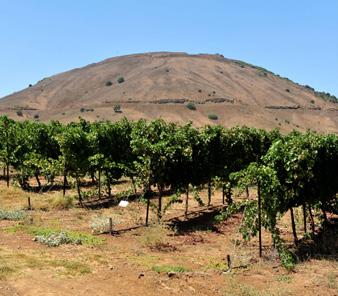
Israel is a country that was famous for winemaking in ancient times. The mention of grapes as one of the “seven-species” in the Hebrew Bible illustrates how significant the winemaking industry was in the region. Israeli wine was considered a fine wine and trading ships exported it all the way to Europe.
The first major change in modern days was in the 1880s when Baron Edmond de Rothschild, owner of the famous Château Lafite-Rothschild from Bordeaux, planted vineyards of French grape varieties in Israel. It took about 100 years until the next big advancement in Israeli winemaking when Professor Cornelius S. Ough from UC-Davis visited Israel in 1972 and gave his opinion that the Golan Heights area was best suited for wine grape growing. His advice led to the founding of the Golan Heights Winery in 1983. This was the first Israeli winery that received international recognition. Today, Israel has over 300 small- to medium-sized wineries crafting high-quality wines that can compete with some of the great wine regions of the world.
Home winemaking has been a hobby in Israel for many years — especially amongst the religious sector of the population who enjoy using their own wine for Shabbat. However, most of those winemakers make wine using “natural” methods and don’t use modern equipment and techniques.
Home winemakers utilizing specialized equipment and knowledge on the topic are a relatively new phenomenon in Israel. It is still a new field so there are no figures or data that can tell us about the scope of hobby winemaking in Israel but it is clearly growing in popularity.
There are very few courses being
offered to study winemaking here. There is not one book in Hebrew that specifically covers the topic of winemaking and the information available online is limited. All my information was attained from English language sources such as WineMaker magazine, which was a great help. Unfortunately, when I began this hobby I was not fluent in English so there was a steep learning curve, especially with the technical jargon. Today, I can say that it was well worth the effort.
In Israel there are no winemaking kits, frozen must, or juice concentrates. The only option is to make wine from fresh grapes. Winemaking supplies are also few and far between. Most of them are from one source — a large supplier in Haifa that imports equipment for commercial wineries and also carries a nice selection of high-quality, Italian home winemaking equipment. So, for example, instead of carboys we use Italian demijohns.
Obtaining items such as yeast, enzymes, etc., is even more complicated as most of these materials can be purchased only in bulk packaging suitable for commercial-scale operations. There are a few suppliers willing to repack in smaller sizes, especially for some of the more important ingredients and additives winemakers might want.
Personally, I am working now on developing a blog in Hebrew at https://homewinemaking.ovh, where I share my knowledge and experience on the topic of home winemaking. I hope to help other people in Israel to enter this amazing hobby easily and to inform those already making wine at home in Israel to use more advanced techniques that will help them to make great wines.
Shalom and L’chaim from Jerusalem.
There is not one book in Hebrew that specifically covers the topic of winemaking and the information available online is limited.
A perfect blend of Blended and Fresh Grape Musts in a 2.64 US Gallon (10 L) bladder, flash pasteurized to ensure shelf stability. Combined with our 8.8 Lb (4 Kg) Allgrape® PACK containing crushed, de-stemmed grapes, pasteurized and preserved with minimal sulfites. It does NOT have added sweeteners, concentrate, or color.
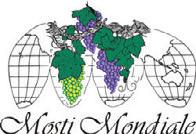


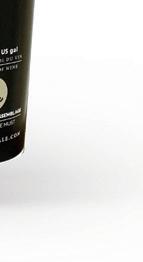


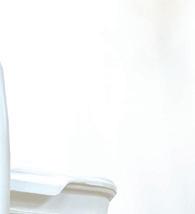


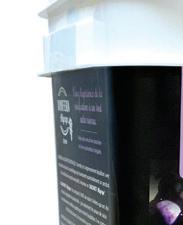

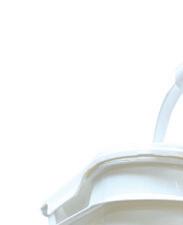



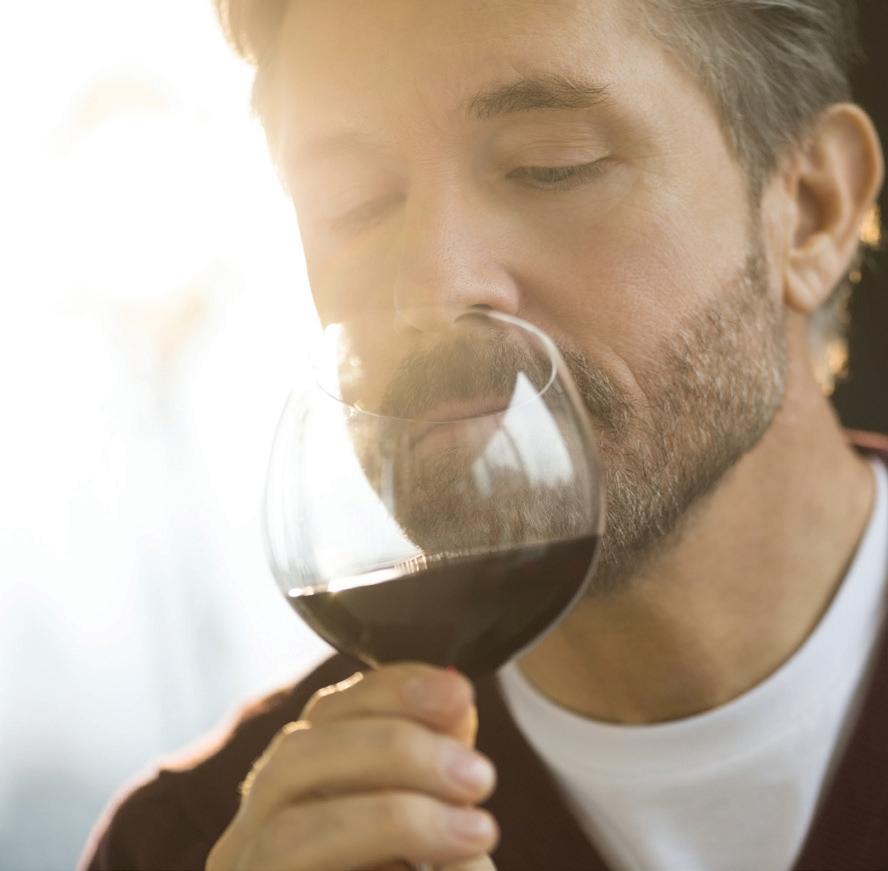
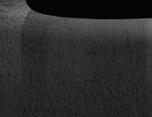
























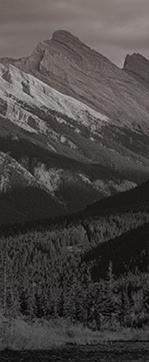





A limited edition collection of unique and exciting wines, from classic varietals to exceptional blends.






